Advertisement

The Boeing 737 MAX: Lessons for Engineering Ethics
- Original Research/Scholarship
- Published: 10 July 2020
- Volume 26 , pages 2957–2974, ( 2020 )
Cite this article

- Joseph Herkert 1 ,
- Jason Borenstein 2 &
- Keith Miller 3
115k Accesses
66 Citations
111 Altmetric
12 Mentions
Explore all metrics
The crash of two 737 MAX passenger aircraft in late 2018 and early 2019, and subsequent grounding of the entire fleet of 737 MAX jets, turned a global spotlight on Boeing’s practices and culture. Explanations for the crashes include: design flaws within the MAX’s new flight control software system designed to prevent stalls; internal pressure to keep pace with Boeing’s chief competitor, Airbus; Boeing’s lack of transparency about the new software; and the lack of adequate monitoring of Boeing by the FAA, especially during the certification of the MAX and following the first crash. While these and other factors have been the subject of numerous government reports and investigative journalism articles, little to date has been written on the ethical significance of the accidents, in particular the ethical responsibilities of the engineers at Boeing and the FAA involved in designing and certifying the MAX. Lessons learned from this case include the need to strengthen the voice of engineers within large organizations. There is also the need for greater involvement of professional engineering societies in ethics-related activities and for broader focus on moral courage in engineering ethics education.
Similar content being viewed by others

Repentance as Rebuke: Betrayal and Moral Injury in Safety Engineering

Airworthiness and Safety in Air Operations in Ecuadorian Public Institutions

Safety in Numbers? (Lessons Learned From Aviation Safety Assessment Techniques)
Explore related subjects.
- Medical Ethics
- Artificial Intelligence
Avoid common mistakes on your manuscript.
Introduction
In October 2018 and March 2019, Boeing 737 MAX passenger jets crashed minutes after takeoff; these two accidents claimed nearly 350 lives. After the second incident, all 737 MAX planes were grounded worldwide. The 737 MAX was an updated version of the 737 workhorse that first began flying in the 1960s. The crashes were precipitated by a failure of an Angle of Attack (AOA) sensor and the subsequent activation of new flight control software, the Maneuvering Characteristics Augmentation System (MCAS). The MCAS software was intended to compensate for changes in the size and placement of the engines on the MAX as compared to prior versions of the 737. The existence of the software, designed to prevent a stall due to the reconfiguration of the engines, was not disclosed to pilots until after the first crash. Even after that tragic incident, pilots were not required to undergo simulation training on the 737 MAX.
In this paper, we examine several aspects of the case, including technical and other factors that led up to the crashes, especially Boeing’s design choices and organizational tensions internal to the company, and between Boeing and the U.S. Federal Aviation Administration (FAA). While the case is ongoing and at this writing, the 737 MAX has yet to be recertified for flight, our analysis is based on numerous government reports and detailed news accounts currently available. We conclude with a discussion of specific lessons for engineers and engineering educators regarding engineering ethics.
Overview of 737 MAX History and Crashes
In December 2010, Boeing’s primary competitor Airbus announced the A320neo family of jetliners, an update of their successful A320 narrow-body aircraft. The A320neo featured larger, more fuel-efficient engines. Boeing had been planning to introduce a totally new aircraft to replace its successful, but dated, 737 line of jets; yet to remain competitive with Airbus, Boeing instead announced in August 2011 the 737 MAX family, an update of the 737NG with similar engine upgrades to the A320neo and other improvements (Gelles et al. 2019 ). The 737 MAX, which entered service in May 2017, became Boeing’s fastest-selling airliner of all time with 5000 orders from over 100 airlines worldwide (Boeing n.d. a) (See Fig. 1 for timeline of 737 MAX key events).
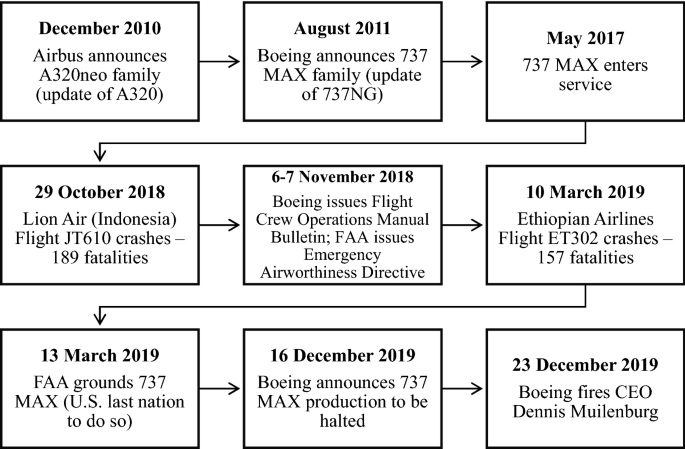
737 MAX timeline showing key events from 2010 to 2019
The 737 MAX had been in operation for over a year when on October 29, 2018, Lion Air flight JT610 crashed into the Java Sea 13 minutes after takeoff from Jakarta, Indonesia; all 189 passengers and crew on board died. Monitoring from the flight data recorder recovered from the wreckage indicated that MCAS, the software specifically designed for the MAX, forced the nose of the aircraft down 26 times in 10 minutes (Gates 2018 ). In October 2019, the Final Report of Indonesia’s Lion Air Accident Investigation was issued. The Report placed some of the blame on the pilots and maintenance crews but concluded that Boeing and the FAA were primarily responsible for the crash (Republic of Indonesia 2019 ).
MCAS was not identified in the original documentation/training for 737 MAX pilots (Glanz et al. 2019 ). But after the Lion Air crash, Boeing ( 2018 ) issued a Flight Crew Operations Manual Bulletin on November 6, 2018 containing procedures for responding to flight control problems due to possible erroneous AOA inputs. The next day the FAA ( 2018a ) issued an Emergency Airworthiness Directive on the same subject; however, the FAA did not ground the 737 MAX at that time. According to published reports, these notices were the first time that airline pilots learned of the existence of MCAS (e.g., Bushey 2019 ).
On March 20, 2019, about four months after the Lion Air crash, Ethiopian Airlines Flight ET302 crashed 6 minutes after takeoff in a field 39 miles from Addis Ababa Airport. The accident caused the deaths of all 157 passengers and crew. The Preliminary Report of the Ethiopian Airlines Accident Investigation (Federal Democratic Republic of Ethiopia 2019 ), issued in April 2019, indicated that the pilots followed the checklist from the Boeing Flight Crew Operations Manual Bulletin posted after the Lion Air crash but could not control the plane (Ahmed et al. 2019 ). This was followed by an Interim Report (Federal Democratic Republic of Ethiopia 2020 ) issued in March 2020 that exonerated the pilots and airline, and placed blame for the accident on design flaws in the MAX (Marks and Dahir 2020 ). Following the second crash, the 737 MAX was grounded worldwide with the U.S., through the FAA, being the last country to act on March 13, 2019 (Kaplan et al. 2019 ).
Design Choices that Led to the Crashes
As noted above, with its belief that it must keep up with its main competitor, Airbus, Boeing elected to modify the latest generation of the 737 family, the 737NG, rather than design an entirely new aircraft. Yet this raised a significant engineering challenge for Boeing. Mounting larger, more fuel-efficient engines, similar to those employed on the A320neo, on the existing 737 airframe posed a serious design problem, because the 737 family was built closer to the ground than the Airbus A320. In order to provide appropriate ground clearance, the larger engines had to be mounted higher and farther forward on the wings than previous models of the 737 (see Fig. 2 ). This significantly changed the aerodynamics of the aircraft and created the possibility of a nose-up stall under certain flight conditions (Travis 2019 ; Glanz et al. 2019 ).

(Image source: https://www.norebbo.com )
Boeing 737 MAX (left) compared to Boeing 737NG (right) showing larger 737 MAX engines mounted higher and more forward on the wing.
Boeing’s attempt to solve this problem involved incorporating MCAS as a software fix for the potential stall condition. The 737 was designed with two AOA sensors, one on each side of the aircraft. Yet Boeing decided that the 737 MAX would only use input from one of the plane’s two AOA sensors. If the single AOA sensor was triggered, MCAS would detect a dangerous nose-up condition and send a signal to the horizontal stabilizer located in the tail. Movement of the stabilizer would then force the plane’s tail up and the nose down (Travis 2019 ). In both the Lion Air and Ethiopian Air crashes, the AOA sensor malfunctioned, repeatedly activating MCAS (Gates 2018 ; Ahmed et al. 2019 ). Since the two crashes, Boeing has made adjustments to the MCAS, including that the system will rely on input from the two AOA sensors instead of just one. But still more problems with MCAS have been uncovered. For example, an indicator light that would alert pilots if the jet’s two AOA sensors disagreed, thought by Boeing to be standard on all MAX aircraft, would only operate as part of an optional equipment package that neither airline involved in the crashes purchased (Gelles and Kitroeff 2019a ).
Similar to its responses to previous accidents, Boeing has been reluctant to admit to a design flaw in its aircraft, instead blaming pilot error (Hall and Goelz 2019 ). In the 737 MAX case, the company pointed to the pilots’ alleged inability to control the planes under stall conditions (Economy 2019 ). Following the Ethiopian Airlines crash, Boeing acknowledged for the first time that MCAS played a primary role in the crashes, while continuing to highlight that other factors, such as pilot error, were also involved (Hall and Goelz 2019 ). For example, on April 29, 2019, more than a month after the second crash, then Boeing CEO Dennis Muilenburg defended MCAS by stating:
We've confirmed that [the MCAS system] was designed per our standards, certified per our standards, and we're confident in that process. So, it operated according to those design and certification standards. So, we haven't seen a technical slip or gap in terms of the fundamental design and certification of the approach. (Economy 2019 )
The view that MCAS was not primarily at fault was supported within an article written by noted journalist and pilot William Langewiesche ( 2019 ). While not denying Boeing made serious mistakes, he placed ultimate blame on the use of inexperienced pilots by the two airlines involved in the crashes. Langewiesche suggested that the accidents resulted from the cost-cutting practices of the airlines and the lax regulatory environments in which they operated. He argued that more experienced pilots, despite their lack of information on MCAS, should have been able to take corrective action to control the planes using customary stall prevention procedures. Langewiesche ( 2019 ) concludes in his article that:
What we had in the two downed airplanes was a textbook failure of airmanship. In broad daylight, these pilots couldn’t decipher a variant of a simple runaway trim, and they ended up flying too fast at low altitude, neglecting to throttle back and leading their passengers over an aerodynamic edge into oblivion. They were the deciding factor here — not the MCAS, not the Max.
Others have taken a more critical view of MCAS, Boeing, and the FAA. These critics prominently include Captain Chesley “Sully” Sullenberger, who famously crash-landed an A320 in the Hudson River after bird strikes had knocked out both of the plane’s engines. Sullenberger responded directly to Langewiesche in a letter to the Editor:
… Langewiesche draws the conclusion that the pilots are primarily to blame for the fatal crashes of Lion Air 610 and Ethiopian 302. In resurrecting this age-old aviation canard, Langewiesche minimizes the fatal design flaws and certification failures that precipitated those tragedies, and still pose a threat to the flying public. I have long stated, as he does note, that pilots must be capable of absolute mastery of the aircraft and the situation at all times, a concept pilots call airmanship. Inadequate pilot training and insufficient pilot experience are problems worldwide, but they do not excuse the fatally flawed design of the Maneuvering Characteristics Augmentation System (MCAS) that was a death trap.... (Sullenberger 2019 )
Noting that he is one of the few pilots to have encountered both accident sequences in a 737 MAX simulator, Sullenberger continued:
These emergencies did not present as a classic runaway stabilizer problem, but initially as ambiguous unreliable airspeed and altitude situations, masking MCAS. The MCAS design should never have been approved, not by Boeing, and not by the Federal Aviation Administration (FAA)…. (Sullenberger 2019 )
In June 2019, Sullenberger noted in Congressional Testimony that “These crashes are demonstrable evidence that our current system of aircraft design and certification has failed us. These accidents should never have happened” (Benning and DiFurio 2019 ).
Others have agreed with Sullenberger’s assessment. Software developer and pilot Gregory Travis ( 2019 ) argues that Boeing’s design for the 737 MAX violated industry norms and that the company unwisely used software to compensate for inadequacies in the hardware design. Travis also contends that the existence of MCAS was not disclosed to pilots in order to preserve the fiction that the 737 MAX was just an update of earlier 737 models, which served as a way to circumvent the more stringent FAA certification requirements for a new airplane. Reports from government agencies seem to support this assessment, emphasizing the chaotic cockpit conditions created by MCAS and poor certification practices. The U.S. National Transportation Safety Board (NTSB) ( 2019 ) Safety Recommendations to the FAA in September 2019 indicated that Boeing underestimated the effect MCAS malfunction would have on the cockpit environment (Kitroeff 2019 , a , b ). The FAA Joint Authorities Technical Review ( 2019 ), which included international participation, issued its Final Report in October 2019. The Report faulted Boeing and FAA in MCAS certification (Koenig 2019 ).
Despite Boeing’s attempts to downplay the role of MCAS, it began to work on a fix for the system shortly after the Lion Air crash (Gates 2019 ). MCAS operation will now be based on inputs from both AOA sensors, instead of just one sensor, with a cockpit indicator light when the sensors disagree. In addition, MCAS will only be activated once for an AOA warning rather than multiple times. What follows is that the system would only seek to prevent a stall once per AOA warning. Also, MCAS’s power will be limited in terms of how much it can move the stabilizer and manual override by the pilot will always be possible (Bellamy 2019 ; Boeing n.d. b; Gates 2019 ). For over a year after the Lion Air crash, Boeing held that pilot simulator training would not be required for the redesigned MCAS system. In January 2020, Boeing relented and recommended that pilot simulator training be required when the 737 MAX returns to service (Pasztor et al. 2020 ).
Boeing and the FAA
There is mounting evidence that Boeing, and the FAA as well, had warnings about the inadequacy of MCAS’s design, and about the lack of communication to pilots about its existence and functioning. In 2015, for example, an unnamed Boeing engineer raised in an email the issue of relying on a single AOA sensor (Bellamy 2019 ). In 2016, Mark Forkner, Boeing’s Chief Technical Pilot, in an email to a colleague flagged the erratic behavior of MCAS in a flight simulator noting: “It’s running rampant” (Gelles and Kitroeff 2019c ). Forkner subsequently came under federal investigation regarding whether he misled the FAA regarding MCAS (Kitroeff and Schmidt 2020 ).
In December 2018, following the Lion Air Crash, the FAA ( 2018b ) conducted a Risk Assessment that estimated that fifteen more 737 MAX crashes would occur in the expected fleet life of 45 years if the flight control issues were not addressed; this Risk Assessment was not publicly disclosed until Congressional hearings a year later in December 2019 (Arnold 2019 ). After the two crashes, a senior Boeing engineer, Curtis Ewbank, filed an internal ethics complaint in 2019 about management squelching of a system that might have uncovered errors in the AOA sensors. Ewbank has since publicly stated that “I was willing to stand up for safety and quality… Boeing management was more concerned with cost and schedule than safety or quality” (Kitroeff et al. 2019b ).
One factor in Boeing’s apparent reluctance to heed such warnings may be attributed to the seeming transformation of the company’s engineering and safety culture over time to a finance orientation beginning with Boeing’s merger with McDonnell–Douglas in 1997 (Tkacik 2019 ; Useem 2019 ). Critical changes after the merger included replacing many in Boeing’s top management, historically engineers, with business executives from McDonnell–Douglas and moving the corporate headquarters to Chicago, while leaving the engineering staff in Seattle (Useem 2019 ). According to Tkacik ( 2019 ), the new management even went so far as “maligning and marginalizing engineers as a class”.
Financial drivers thus began to place an inordinate amount of strain on Boeing employees, including engineers. During the development of the 737 MAX, significant production pressure to keep pace with the Airbus 320neo was ever-present. For example, Boeing management allegedly rejected any design changes that would prolong certification or require additional pilot training for the MAX (Gelles et al. 2019 ). As Adam Dickson, a former Boeing engineer, explained in a television documentary (BBC Panorama 2019 ): “There was a lot of interest and pressure on the certification and analysis engineers in particular, to look at any changes to the Max as minor changes”.
Production pressures were exacerbated by the “cozy relationship” between Boeing and the FAA (Kitroeff et al. 2019a ; see also Gelles and Kaplan 2019 ; Hall and Goelz 2019 ). Beginning in 2005, the FAA increased its reliance on manufacturers to certify their own planes. Self-certification became standard practice throughout the U.S. airline industry. By 2018, Boeing was certifying 96% of its own work (Kitroeff et al. 2019a ).
The serious drawbacks to self-certification became acutely apparent in this case. Of particular concern, the safety analysis for MCAS delegated to Boeing by the FAA was flawed in at least three respects: (1) the analysis underestimated the power of MCAS to move the plane’s horizontal tail and thus how difficult it would be for pilots to maintain control of the aircraft; (2) it did not account for the system deploying multiple times; and (3) it underestimated the risk level if MCAS failed, thus permitting a design feature—the single AOA sensor input to MCAS—that did not have built-in redundancy (Gates 2019 ). Related to these concerns, the ability of MCAS to move the horizontal tail was increased without properly updating the safety analysis or notifying the FAA about the change (Gates 2019 ). In addition, the FAA did not require pilot training for MCAS or simulator training for the 737 MAX (Gelles and Kaplan 2019 ). Since the MAX grounding, the FAA has been become more independent during its assessments and certifications—for example, they will not use Boeing personnel when certifying approvals of new 737 MAX planes (Josephs 2019 ).
The role of the FAA has also been subject to political scrutiny. The report of a study of the FAA certification process commissioned by Secretary of Transportation Elaine Chao (DOT 2020 ), released January 16, 2020, concluded that the FAA certification process was “appropriate and effective,” and that certification of the MAX as a new airplane would not have made a difference in the plane’s safety. At the same time, the report recommended a number of measures to strengthen the process and augment FAA’s staff (Pasztor and Cameron 2020 ). In contrast, a report of preliminary investigative findings by the Democratic staff of the House Committee on Transportation and Infrastructure (House TI 2020 ), issued in March 2020, characterized FAA’s certification of the MAX as “grossly insufficient” and criticized Boeing’s design flaws and lack of transparency with the FAA, airlines, and pilots (Duncan and Laris 2020 ).
Boeing has incurred significant economic losses from the crashes and subsequent grounding of the MAX. In December 2019, Boeing CEO Dennis Muilenburg was fired and the corporation announced that 737 MAX production would be suspended in January 2020 (Rich 2019 ) (see Fig. 1 ). Boeing is facing numerous lawsuits and possible criminal investigations. Boeing estimates that its economic losses for the 737 MAX will exceed $18 billion (Gelles 2020 ). In addition to the need to fix MCAS, other issues have arisen in recertification of the aircraft, including wiring for controls of the tail stabilizer, possible weaknesses in the engine rotors, and vulnerabilities in lightning protection for the engines (Kitroeff and Gelles 2020 ). The FAA had planned to flight test the 737 MAX early in 2020, and it was supposed to return to service in summer 2020 (Gelles and Kitroeff 2020 ). Given the global impact of the COVID-19 pandemic and other factors, it is difficult to predict when MAX flights might resume. In addition, uncertainty of passenger demand has resulted in some airlines delaying or cancelling orders for the MAX (Bogaisky 2020 ). Even after obtaining flight approval, public resistance to flying in the 737 MAX will probably be considerable (Gelles 2019 ).
Lessons for Engineering Ethics
The 737 MAX case is still unfolding and will continue to do so for some time. Yet important lessons can already be learned (or relearned) from the case. Some of those lessons are straightforward, and others are more subtle. A key and clear lesson is that engineers may need reminders about prioritizing the public good, and more specifically, the public’s safety. A more subtle lesson pertains to the ways in which the problem of many hands may or may not apply here. Other lessons involve the need for corporations, engineering societies, and engineering educators to rise to the challenge of nurturing and supporting ethical behavior on the part of engineers, especially in light of the difficulties revealed in this case.
All contemporary codes of ethics promulgated by major engineering societies state that an engineer’s paramount responsibility is to protect the “safety, health, and welfare” of the public. The American Institute of Aeronautics and Astronautics Code of Ethics indicates that engineers must “[H]old paramount the safety, health, and welfare of the public in the performance of their duties” (AIAA 2013 ). The Institute of Electrical and Electronics Engineers (IEEE) Code of Ethics goes further, pledging its members: “…to hold paramount the safety, health, and welfare of the public, to strive to comply with ethical design and sustainable development practices, and to disclose promptly factors that might endanger the public or the environment” (IEEE 2017 ). The IEEE Computer Society (CS) cooperated with the Association for Computing Machinery (ACM) in developing a Software Engineering Code of Ethics ( 1997 ) which holds that software engineers shall: “Approve software only if they have a well-founded belief that it is safe, meets specifications, passes appropriate tests, and does not diminish quality of life, diminish privacy or harm the environment….” According to Gotterbarn and Miller ( 2009 ), the latter code is a useful guide when examining cases involving software design and underscores the fact that during design, as in all engineering practice, the well-being of the public should be the overriding concern. While engineering codes of ethics are plentiful in number, they differ in their source of moral authority (i.e., organizational codes vs. professional codes), are often unenforceable through the law, and formally apply to different groups of engineers (e.g., based on discipline or organizational membership). However, the codes are generally recognized as a statement of the values inherent to engineering and its ethical commitments (Davis 2015 ).
An engineer’s ethical responsibility does not preclude consideration of factors such as cost and schedule (Pinkus et al. 1997 ). Engineers always have to grapple with constraints, including time and resource limitations. The engineers working at Boeing did have legitimate concerns about their company losing contracts to its competitor Airbus. But being an engineer means that public safety and welfare must be the highest priority (Davis 1991 ). The aforementioned software and other design errors in the development of the 737 MAX, which resulted in hundreds of deaths, would thus seem to be clear violations of engineering codes of ethics. In addition to pointing to engineering codes, Peterson ( 2019 ) argues that Boeing engineers and managers violated widely accepted ethical norms such as informed consent and the precautionary principle.
From an engineering perspective, the central ethical issue in the MAX case arguably circulates around the decision to use software (i.e., MCAS) to “mask” a questionable hardware design—the repositioning of the engines that disrupted the aerodynamics of the airframe (Travis 2019 ). As Johnston and Harris ( 2019 ) argue: “To meet the design goals and avoid an expensive hardware change, Boeing created the MCAS as a software Band-Aid.” Though a reliance on software fixes often happens in this manner, it places a high burden of safety on such fixes that they may not be able to handle, as is illustrated by the case of the Therac-25 radiation therapy machine. In the Therac-25 case, hardware safety interlocks employed in earlier models of the machine were replaced by software safety controls. In addition, information about how the software might malfunction was lacking from the user manual for the Therac machine. Thus, when certain types of errors appeared on its interface, the machine’s operators did not know how to respond. Software flaws, among other factors, contributed to six patients being given massive radiation overdoses, resulting in deaths and serious injuries (Leveson and Turner 1993 ). A more recent case involves problems with the embedded software guiding the electronic throttle in Toyota vehicles. In 2013, “…a jury found Toyota responsible for two unintended acceleration deaths, with expert witnesses citing bugs in the software and throttle fail safe defects” (Cummings and Britton 2020 ).
Boeing’s use of MCAS to mask the significant change in hardware configuration of the MAX was compounded by not providing redundancy for components prone to failure (i.e., the AOA sensors) (Campbell 2019 ), and by failing to notify pilots about the new software. In such cases, it is especially crucial that pilots receive clear documentation and relevant training so that they know how to manage the hand-off with an automated system properly (Johnston and Harris 2019 ). Part of the necessity for such training is related to trust calibration (Borenstein et al. 2020 ; Borenstein et al. 2018 ), a factor that has contributed to previous airplane accidents (e.g., Carr 2014 ). For example, if pilots do not place enough trust in an automated system, they may add risk by intervening in system operation. Conversely, if pilots trust an automated system too much, they may lack sufficient time to act once they identify a problem. This is further complicated in the MAX case because pilots were not fully aware, if at all, of MCAS’s existence and how the system functioned.
In addition to engineering decision-making that failed to prioritize public safety, questionable management decisions were also made at both Boeing and the FAA. As noted earlier, Boeing managerial leadership ignored numerous warning signs that the 737 MAX was not safe. Also, FAA’s shift to greater reliance on self-regulation by Boeing was ill-advised; that lesson appears to have been learned at the expense of hundreds of lives (Duncan and Aratani 2019 ).
The Problem of Many Hands Revisited
Actions, or inaction, by large, complex organizations, in this case corporate and government entities, suggest that the “problem of many hands” may be relevant to the 737 MAX case. At a high level of abstraction, the problem of many hands involves the idea that accountability is difficult to assign in the face of collective action, especially in a computerized society (Thompson 1980 ; Nissenbaum 1994 ). According to Nissenbaum ( 1996 , 29), “Where a mishap is the work of ‘many hands,’ it may not be obvious who is to blame because frequently its most salient and immediate causal antecedents do not converge with its locus of decision-making. The conditions for blame, therefore, are not satisfied in a way normally satisfied when a single individual is held blameworthy for a harm”.
However, there is an alternative understanding of the problem of many hands. In this version of the problem, the lack of accountability is not merely because multiple people and multiple decisions figure into a final outcome. Instead, in order to “qualify” as the problem of many hands, the component decisions should be benign, or at least far less harmful, if examined in isolation; only when the individual decisions are collectively combined do we see the most harmful result. In this understanding, the individual decision-makers should not have the same moral culpability as they would if they made all the decisions by themselves (Noorman 2020 ).
Both of these understandings of the problem of many hands could shed light on the 737 MAX case. Yet we focus on the first version of the problem. We admit the possibility that some of the isolated decisions about the 737 MAX may have been made in part because of ignorance of a broader picture. While we do not stake a claim on whether this is what actually happened in the MAX case, we acknowledge that it may be true in some circumstances. However, we think the more important point is that some of the 737 MAX decisions were so clearly misguided that a competent engineer should have seen the implications, even if the engineer was not aware of all of the broader context. The problem then is to identify responsibility for the questionable decisions in a way that discourages bad judgments in the future, a task made more challenging by the complexities of the decision-making. Legal proceedings about this case are likely to explore those complexities in detail and are outside the scope of this article. But such complexities must be examined carefully so as not to act as an insulator to accountability.
When many individuals are involved in the design of a computing device, for example, and a serious failure occurs, each person might try to absolve themselves of responsibility by indicating that “too many people” and “too many decisions” were involved for any individual person to know that the problem was going to happen. This is a common, and often dubious, excuse in the attempt to abdicate responsibility for a harm. While it can have different levels of magnitude and severity, the problem of many hands often arises in large scale ethical failures in engineering such as in the Deepwater Horizon oil spill (Thompson 2014 ).
Possible examples in the 737 MAX case of the difficulty of assigning moral responsibility due to the problem of many hands include:
The decision to reposition the engines;
The decision to mask the jet’s subsequent dynamic instability with MCAS;
The decision to rely on only one AOA sensor in designing MCAS; and
The decision to not inform nor properly train pilots about the MCAS system.
While overall responsibility for each of these decisions may be difficult to allocate precisely, at least points 1–3 above arguably reflect fundamental errors in engineering judgement (Travis 2019 ). Boeing engineers and FAA engineers either participated in or were aware of these decisions (Kitroeff and Gelles 2019 ) and may have had opportunities to reconsider or redirect such decisions. As Davis has noted ( 2012 ), responsible engineering professionals make it their business to address problems even when they did not cause the problem, or, we would argue, solely cause it. As noted earlier, reports indicate that at least one Boeing engineer expressed reservations about the design of MCAS (Bellamy 2019 ). Since the two crashes, one Boeing engineer, Curtis Ewbank, filed an internal ethics complaint (Kitroeff et al. 2019b ) and several current and former Boeing engineers and other employees have gone public with various concerns about the 737 MAX (Pasztor 2019 ). And yet, as is often the case, the flawed design went forward with tragic results.
Enabling Ethical Engineers
The MAX case is eerily reminiscent of other well-known engineering ethics case studies such as the Ford Pinto (Birsch and Fielder 1994 ), Space Shuttle Challenger (Werhane 1991 ), and GM ignition switch (Jennings and Trautman 2016 ). In the Pinto case, Ford engineers were aware of the unsafe placement of the fuel tank well before the car was released to the public and signed off on the design even though crash tests showed the tank was vulnerable to rupture during low-speed rear-end collisions (Baura 2006 ). In the case of the GM ignition switch, engineers knew for at least four years about the faulty design, a flaw that resulted in at least a dozen fatal accidents (Stephan 2016 ). In the case of the well-documented Challenger accident, engineer Roger Boisjoly warned his supervisors at Morton Thiokol of potentially catastrophic flaws in the shuttle’s solid rocket boosters a full six months before the accident. He, along with other engineers, unsuccessfully argued on the eve of launch for a delay due to the effect that freezing temperatures could have on the boosters’ O-ring seals. Boisjoly was also one of a handful of engineers to describe these warnings to the Presidential commission investigating the accident (Boisjoly et al. 1989 ).
Returning to the 737 MAX case, could Ewbank or others with concerns about the safety of the airplane have done more than filing ethics complaints or offering public testimony only after the Lion Air and Ethiopian Airlines crashes? One might argue that requiring professional registration by all engineers in the U.S. would result in more ethical conduct (for example, by giving state licensing boards greater oversight authority). Yet the well-entrenched “industry exemption” from registration for most engineers working in large corporations has undermined such calls (Kline 2001 ).
It could empower engineers with safety concerns if Boeing and other corporations would strengthen internal ethics processes, including sincere and meaningful responsiveness to anonymous complaint channels. Schwartz ( 2013 ) outlines three core components of an ethical corporate culture, including strong core ethical values, a formal ethics program (including an ethics hotline), and capable ethical leadership. Schwartz points to Siemens’ creation of an ethics and compliance department following a bribery scandal as an example of a good solution. Boeing has had a compliance department for quite some time (Schnebel and Bienert 2004 ) and has taken efforts in the past to evaluate its effectiveness (Boeing 2003 ). Yet it is clear that more robust measures are needed in response to ethics concerns and complaints. Since the MAX crashes, Boeing’s Board has implemented a number of changes including establishing a corporate safety group and revising internal reporting procedures so that lead engineers primarily report to the chief engineer rather than business managers (Gelles and Kitroeff 2019b , Boeing n.d. c). Whether these measures will be enough to restore Boeing’s former engineering-centered focus remains to be seen.
Professional engineering societies could play a stronger role in communicating and enforcing codes of ethics, in supporting ethical behavior of engineers, and by providing more educational opportunities for learning about ethics and about the ethical responsibilities of engineers. Some societies, including ACM and IEEE, have become increasingly engaged in ethics-related activities. Initially ethics engagement by the societies consisted primarily of a focus on macroethical issues such as sustainable development (Herkert 2004 ). Recently, however, the societies have also turned to a greater focus on microethical issues (the behavior of individuals). The 2017 revision to the IEEE Code of Ethics, for example, highlights the importance of “ethical design” (Adamson and Herkert 2020 ). This parallels IEEE activities in the area of design of autonomous and intelligent systems (e.g., IEEE 2018 ). A promising outcome of this emphasis is a move toward implementing “ethical design” frameworks (Peters et al. 2020 ).
In terms of engineering education, educators need to place a greater emphasis on fostering moral courage, that is the courage to act on one’s moral convictions including adherence to codes of ethics. This is of particular significance in large organizations such as Boeing and the FAA where the agency of engineers may be limited by factors such as organizational culture (Watts and Buckley 2017 ). In a study of twenty-six ethics interventions in engineering programs, Hess and Fore ( 2018 ) found that only twenty-seven percent had a learning goal of development of “ethical courage, confidence or commitment”. This goal could be operationalized in a number of ways, for example through a focus on virtue ethics (Harris 2008 ) or professional identity (Hashemian and Loui 2010 ). This need should not only be addressed within the engineering curriculum but during lifelong learning initiatives and other professional development opportunities as well (Miller 2019 ).
The circumstances surrounding the 737 MAX airplane could certainly serve as an informative case study for ethics or technical courses. The case can shed light on important lessons for engineers including the complex interactions, and sometimes tensions, between engineering and managerial considerations. The case also tangibly displays that what seems to be relatively small-scale, and likely well-intended, decisions by individual engineers can combine collectively to result in large-scale tragedy. No individual person wanted to do harm, but it happened nonetheless. Thus, the case can serve a reminder to current and future generations of engineers that public safety must be the first and foremost priority. A particularly useful pedagogical method for considering this case is to assign students to the roles of engineers, managers, and regulators, as well as the flying public, airline personnel, and representatives of engineering societies (Herkert 1997 ). In addition to illuminating the perspectives and responsibilities of each stakeholder group, role-playing can also shed light on the “macroethical” issues raised by the case (Martin et al. 2019 ) such as airline safety standards and the proper role for engineers and engineering societies in the regulation of the industry.
Conclusions and Recommendations
The case of the Boeing 737 MAX provides valuable lessons for engineers and engineering educators concerning the ethical responsibilities of the profession. Safety is not cheap, but careless engineering design in the name of minimizing costs and adhering to a delivery schedule is a symptom of ethical blight. Using almost any standard ethical analysis or framework, Boeing’s actions regarding the safety of the 737 MAX, particularly decisions regarding MCAS, fall short.
Boeing failed in its obligations to protect the public. At a minimum, the company had an obligation to inform airlines and pilots of significant design changes, especially the role of MCAS in compensating for repositioning of engines in the MAX from prior versions of the 737. Clearly, it was a “significant” change because it had a direct, and unfortunately tragic, impact on the public’s safety. The Boeing and FAA interaction underscores the fact that conflicts of interest are a serious concern in regulatory actions within the airline industry.
Internal and external organizational factors may have interfered with Boeing and FAA engineers’ fulfillment of their professional ethical responsibilities; this is an all too common problem that merits serious attention from industry leaders, regulators, professional societies, and educators. The lessons to be learned in this case are not new. After large scale tragedies involving engineering decision-making, calls for change often emerge. But such lessons apparently must be retaught and relearned by each generation of engineers.
ACM/IEEE-CS Joint Task Force. (1997). Software Engineering Code of Ethics and Professional Practice, https://ethics.acm.org/code-of-ethics/software-engineering-code/ .
Adamson, G., & Herkert, J. (2020). Addressing intelligent systems and ethical design in the IEEE Code of Ethics. In Codes of ethics and ethical guidelines: Emerging technologies, changing fields . New York: Springer ( in press ).
Ahmed, H., Glanz, J., & Beech, H. (2019). Ethiopian airlines pilots followed Boeing’s safety procedures before crash, Report Shows. The New York Times, April 4, https://www.nytimes.com/2019/04/04/world/asia/ethiopia-crash-boeing.html .
AIAA. (2013). Code of Ethics, https://www.aiaa.org/about/Governance/Code-of-Ethics .
Arnold, K. (2019). FAA report predicted there could be 15 more 737 MAX crashes. The Dallas Morning News, December 11, https://www.dallasnews.com/business/airlines/2019/12/11/faa-chief-says-boeings-737-max-wont-be-approved-in-2019/
Baura, G. (2006). Engineering ethics: an industrial perspective . Amsterdam: Elsevier.
Google Scholar
BBC News. (2019). Work on production line of Boeing 737 MAX ‘Not Adequately Funded’. July 29, https://www.bbc.com/news/business-49142761 .
Bellamy, W. (2019). Boeing CEO outlines 737 MAX MCAS software fix in congressional hearings. Aviation Today, November 2, https://www.aviationtoday.com/2019/11/02/boeing-ceo-outlines-mcas-updates-congressional-hearings/ .
Benning, T., & DiFurio, D. (2019). American Airlines Pilots Union boss prods lawmakers to solve 'Crisis of Trust' over Boeing 737 MAX. The Dallas Morning News, June 19, https://www.dallasnews.com/business/airlines/2019/06/19/american-airlines-pilots-union-boss-prods-lawmakers-to-solve-crisis-of-trust-over-boeing-737-max/ .
Birsch, D., & Fielder, J. (Eds.). (1994). The ford pinto case: A study in applied ethics, business, and technology . New York: The State University of New York Press.
Boeing. (2003). Boeing Releases Independent Reviews of Company Ethics Program. December 18, https://boeing.mediaroom.com/2003-12-18-Boeing-Releases-Independent-Reviews-of-Company-Ethics-Program .
Boeing. (2018). Flight crew operations manual bulletin for the Boeing company. November 6, https://www.avioesemusicas.com/wp-content/uploads/2018/10/TBC-19-Uncommanded-Nose-Down-Stab-Trim-Due-to-AOA.pdf .
Boeing. (n.d. a). About the Boeing 737 MAX. https://www.boeing.com/commercial/737max/ .
Boeing. (n.d. b). 737 MAX Updates. https://www.boeing.com/737-max-updates/ .
Boeing. (n.d. c). Initial actions: sharpening our focus on safety. https://www.boeing.com/737-max-updates/resources/ .
Bogaisky, J. (2020). Boeing stock plunges as coronavirus imperils quick ramp up in 737 MAX deliveries. Forbes, March 11, https://www.forbes.com/sites/jeremybogaisky/2020/03/11/boeing-coronavirus-737-max/#1b9eb8955b5a .
Boisjoly, R. P., Curtis, E. F., & Mellican, E. (1989). Roger Boisjoly and the challenger disaster: The ethical dimensions. J Bus Ethics, 8 (4), 217–230.
Article Google Scholar
Borenstein, J., Mahajan, H. P., Wagner, A. R., & Howard, A. (2020). Trust and pediatric exoskeletons: A comparative study of clinician and parental perspectives. IEEE Transactions on Technology and Society , 1 (2), 83–88.
Borenstein, J., Wagner, A. R., & Howard, A. (2018). Overtrust of pediatric health-care robots: A preliminary survey of parent perspectives. IEEE Robot Autom Mag, 25 (1), 46–54.
Bushey, C. (2019). The Tough Crowd Boeing Needs to Convince. Crain’s Chicago Business, October 25, https://www.chicagobusiness.com/manufacturing/tough-crowd-boeing-needs-convince .
Campbell, D. (2019). The many human errors that brought down the Boeing 737 MAX. The Verge, May 2, https://www.theverge.com/2019/5/2/18518176/boeing-737-max-crash-problems-human-error-mcas-faa .
Carr, N. (2014). The glass cage: Automation and us . Norton.
Cummings, M. L., & Britton, D. (2020). Regulating safety-critical autonomous systems: past, present, and future perspectives. In Living with robots (pp. 119–140). Academic Press, New York.
Davis, M. (1991). Thinking like an engineer: The place of a code of ethics in the practice of a profession. Philos Publ Affairs, 20 (2), 150–167.
Davis, M. (2012). “Ain’t no one here but us social forces”: Constructing the professional responsibility of engineers. Sci Eng Ethics, 18 (1), 13–34.
Davis, M. (2015). Engineering as profession: Some methodological problems in its study. In Engineering identities, epistemologies and values (pp. 65–79). Springer, New York.
Department of Transportation (DOT). (2020). Official report of the special committee to review the Federal Aviation Administration’s Aircraft Certification Process, January 16. https://www.transportation.gov/sites/dot.gov/files/2020-01/scc-final-report.pdf .
Duncan, I., & Aratani, L. (2019). FAA flexes its authority in final stages of Boeing 737 MAX safety review. The Washington Post, November 27, https://www.washingtonpost.com/transportation/2019/11/27/faa-flexes-its-authority-final-stages-boeing-max-safety-review/ .
Duncan, I., & Laris, M. (2020). House report on 737 Max crashes faults Boeing’s ‘culture of concealment’ and labels FAA ‘grossly insufficient’. The Washington Post, March 6, https://www.washingtonpost.com/local/trafficandcommuting/house-report-on-737-max-crashes-faults-boeings-culture-of-concealment-and-labels-faa-grossly-insufficient/2020/03/06/9e336b9e-5fce-11ea-b014-4fafa866bb81_story.html .
Economy, P. (2019). Boeing CEO Puts Partial Blame on Pilots of Crashed 737 MAX Aircraft for Not 'Completely' Following Procedures. Inc., April 30, https://www.inc.com/peter-economy/boeing-ceo-puts-partial-blame-on-pilots-of-crashed-737-max-aircraft-for-not-completely-following-procedures.html .
Federal Aviation Administration (FAA). (2018a). Airworthiness directives; the Boeing company airplanes. FR Doc No: R1-2018-26365. https://rgl.faa.gov/Regulatory_and_Guidance_Library/rgad.nsf/0/fe8237743be9b8968625835b004fc051/$FILE/2018-23-51_Correction.pdf .
Federal Aviation Administration (FAA). (2018b). Quantitative Risk Assessment. https://www.documentcloud.org/documents/6573544-Risk-Assessment-for-Release-1.html#document/p1 .
Federal Aviation Administration (FAA). (2019). Joint authorities technical review: observations, findings, and recommendations. October 11, https://www.faa.gov/news/media/attachments/Final_JATR_Submittal_to_FAA_Oct_2019.pdf .
Federal Democratic Republic of Ethiopia. (2019). Aircraft accident investigation preliminary report. Report No. AI-01/19, April 4, https://leehamnews.com/wp-content/uploads/2019/04/Preliminary-Report-B737-800MAX-ET-AVJ.pdf .
Federal Democratic Republic of Ethiopia. (2020). Aircraft Accident Investigation Interim Report. Report No. AI-01/19, March 20, https://www.aib.gov.et/wp-content/uploads/2020/documents/accident/ET-302%2520%2520Interim%2520Investigation%2520%2520Report%2520March%25209%25202020.pdf .
Gates, D. (2018). Pilots struggled against Boeing's 737 MAX control system on doomed Lion Air flight. The Seattle Times, November 27, https://www.seattletimes.com/business/boeing-aerospace/black-box-data-reveals-lion-air-pilots-struggle-against-boeings-737-max-flight-control-system/ .
Gates, D. (2019). Flawed analysis, failed oversight: how Boeing, FAA Certified the Suspect 737 MAX Flight Control System. The Seattle Times, March 17, https://www.seattletimes.com/business/boeing-aerospace/failed-certification-faa-missed-safety-issues-in-the-737-max-system-implicated-in-the-lion-air-crash/ .
Gelles, D. (2019). Boeing can’t fly its 737 MAX, but it’s ready to sell its safety. The New York Times, December 24 (updated February 10, 2020), https://www.nytimes.com/2019/12/24/business/boeing-737-max-survey.html .
Gelles, D. (2020). Boeing expects 737 MAX costs will surpass $18 Billion. The New York Times, January 29, https://www.nytimes.com/2020/01/29/business/boeing-737-max-costs.html .
Gelles, D., & Kaplan, T. (2019). F.A.A. Approval of Boeing jet involved in two crashes comes under scrutiny. The New York Times, March 19, https://www.nytimes.com/2019/03/19/business/boeing-elaine-chao.html .
Gelles, D., & Kitroeff, N. (2019a). Boeing Believed a 737 MAX warning light was standard. It wasn’t. New York: The New York Times. https://www.nytimes.com/2019/05/05/business/boeing-737-max-warning-light.html .
Gelles, D., & Kitroeff, N. (2019b). Boeing board to call for safety changes after 737 MAX Crashes. The New York Times, September 15, (updated October 2), https://www.nytimes.com/2019/09/15/business/boeing-safety-737-max.html .
Gelles, D., & Kitroeff, N. (2019c). Boeing pilot complained of ‘Egregious’ issue with 737 MAX in 2016. The New York Times, October 18, https://www.nytimes.com/2019/10/18/business/boeing-flight-simulator-text-message.html .
Gelles, D., & Kitroeff, N. (2020). What needs to happen to get Boeing’s 737 MAX flying again?. The New York Times, February 10, https://www.nytimes.com/2020/02/10/business/boeing-737-max-fly-again.html .
Gelles, D., Kitroeff, N., Nicas, J., & Ruiz, R. R. (2019). Boeing was ‘Go, Go, Go’ to beat airbus with the 737 MAX. The New York Times, March 23, https://www.nytimes.com/2019/03/23/business/boeing-737-max-crash.html .
Glanz, J., Creswell, J., Kaplan, T., & Wichter, Z. (2019). After a Lion Air 737 MAX Crashed in October, Questions About the Plane Arose. The New York Times, February 3, https://www.nytimes.com/2019/02/03/world/asia/lion-air-plane-crash-pilots.html .
Gotterbarn, D., & Miller, K. W. (2009). The public is the priority: Making decisions using the software engineering code of ethics. Computer, 42 (6), 66–73.
Hall, J., & Goelz, P. (2019). The Boeing 737 MAX Crisis Is a Leadership Failure, The New York Times, July 17, https://www.nytimes.com/2019/07/17/opinion/boeing-737-max.html .
Harris, C. E. (2008). The good engineer: Giving virtue its due in engineering ethics. Science and Engineering Ethics, 14 (2), 153–164.
Hashemian, G., & Loui, M. C. (2010). Can instruction in engineering ethics change students’ feelings about professional responsibility? Science and Engineering Ethics, 16 (1), 201–215.
Herkert, J. R. (1997). Collaborative learning in engineering ethics. Science and Engineering Ethics, 3 (4), 447–462.
Herkert, J. R. (2004). Microethics, macroethics, and professional engineering societies. In Emerging technologies and ethical issues in engineering: papers from a workshop (pp. 107–114). National Academies Press, New York.
Hess, J. L., & Fore, G. (2018). A systematic literature review of US engineering ethics interventions. Science and Engineering Ethics, 24 (2), 551–583.
House Committee on Transportation and Infrastructure (House TI). (2020). The Boeing 737 MAX Aircraft: Costs, Consequences, and Lessons from its Design, Development, and Certification-Preliminary Investigative Findings, March. https://transportation.house.gov/imo/media/doc/TI%2520Preliminary%2520Investigative%2520Findings%2520Boeing%2520737%2520MAX%2520March%25202020.pdf .
IEEE. (2017). IEEE Code of Ethics. https://www.ieee.org/about/corporate/governance/p7-8.html .
IEEE. (2018). Ethically Aligned Design: A Vision for Prioritizing Human Well-being with Autonomous and Intelligent Systems (version 2). https://standards.ieee.org/content/dam/ieee-standards/standards/web/documents/other/ead_v2.pdf .
Jennings, M., & Trautman, L. J. (2016). Ethical culture and legal liability: The GM switch crisis and lessons in governance. Boston University Journal of Science and Technology Law, 22 , 187.
Johnston, P., & Harris, R. (2019). The Boeing 737 MAX Saga: Lessons for software organizations. Software Quality Professional, 21 (3), 4–12.
Josephs, L. (2019). FAA tightens grip on Boeing with plan to individually review each new 737 MAX Jetliner. CNBC, November 27, https://www.cnbc.com/2019/11/27/faa-tightens-grip-on-boeing-with-plan-to-individually-inspect-max-jets.html .
Kaplan, T., Austen, I., & Gebrekidan, S. (2019). The New York Times, March 13. https://www.nytimes.com/2019/03/13/business/canada-737-max.html .
Kitroeff, N. (2019). Boeing underestimated cockpit chaos on 737 MAX, N.T.S.B. Says. The New York Times, September 26, https://www.nytimes.com/2019/09/26/business/boeing-737-max-ntsb-mcas.html .
Kitroeff, N., & Gelles, D. (2019). Legislators call on F.A.A. to say why it overruled its experts on 737 MAX. The New York Times, November 7 (updated December 11), https://www.nytimes.com/2019/11/07/business/boeing-737-max-faa.html .
Kitroeff, N., & Gelles, D. (2020). It’s not just software: New safety risks under scrutiny on Boeing’s 737 MAX. The New York Times, January 5, https://www.nytimes.com/2020/01/05/business/boeing-737-max.html .
Kitroeff, N., & Schmidt, M. S. (2020). Federal prosecutors investigating whether Boeing pilot lied to F.A.A. The New York Times, February 21, https://www.nytimes.com/2020/02/21/business/boeing-737-max-investigation.html .
Kitroeff, N., Gelles, D., & Nicas, J. (2019a). The roots of Boeing’s 737 MAX Crisis: A regulator relaxes its oversight. The New York Times, July 27, https://www.nytimes.com/2019/07/27/business/boeing-737-max-faa.html .
Kitroeff, N., Gelles, D., & Nicas, J. (2019b). Boeing 737 MAX safety system was vetoed, Engineer Says. The New York Times, October 2, https://www.nytimes.com/2019/10/02/business/boeing-737-max-crashes.html .
Kline, R. R. (2001). Using history and sociology to teach engineering ethics. IEEE Technology and Society Magazine, 20 (4), 13–20.
Koenig, D. (2019). Boeing, FAA both faulted in certification of the 737 MAX. AP, October 11, https://apnews.com/470abf326cdb4229bdc18c8ad8caa78a .
Langewiesche, W. (2019). What really brought down the Boeing 737 MAX? The New York Times, September 18, https://www.nytimes.com/2019/09/18/magazine/boeing-737-max-crashes.html .
Leveson, N. G., & Turner, C. S. (1993). An investigation of the Therac-25 accidents. Computer, 26 (7), 18–41.
Marks, S., & Dahir, A. L. (2020). Ethiopian report on 737 Max Crash Blames Boeing, March 9, https://www.nytimes.com/2020/03/09/world/africa/ethiopia-crash-boeing.html .
Martin, D. A., Conlon, E., & Bowe, B. (2019). The role of role-play in student awareness of the social dimension of the engineering profession. European Journal of Engineering Education, 44 (6), 882–905.
Miller, G. (2019). Toward lifelong excellence: navigating the engineering-business space. In The Engineering-Business Nexus (pp. 81–101). Springer, Cham.
National Transportation Safety Board (NTSB). (2019). Safety Recommendations Report, September 19, https://www.ntsb.gov/investigations/AccidentReports/Reports/ASR1901.pdf .
Nissenbaum, H. (1994). Computing and accountability. Communications of the ACM , January, https://dl.acm.org/doi/10.1145/175222.175228 .
Nissenbaum, H. (1996). Accountability in a computerized society. Science and Engineering Ethics, 2 (1), 25–42.
Noorman, M. (2020). Computing and moral responsibility. In Zalta, E. N. (Ed.). The Stanford Encyclopedia of Philosophy (Spring), https://plato.stanford.edu/archives/spr2020/entries/computing-responsibility .
Pasztor, A. (2019). More Whistleblower complaints emerge in Boeing 737 MAX Safety Inquiries. The Wall Street Journal, April 27, https://www.wsj.com/articles/more-whistleblower-complaints-emerge-in-boeing-737-max-safety-inquiries-11556418721 .
Pasztor, A., & Cameron, D. (2020). U.S. News: Panel Backs How FAA gave safety approval for 737 MAX. The Wall Street Journal, January 17, https://www.wsj.com/articles/panel-clears-737-maxs-safety-approval-process-at-faa-11579188086 .
Pasztor, A., Cameron.D., & Sider, A. (2020). Boeing backs MAX simulator training in reversal of stance. The Wall Street Journal, January 7, https://www.wsj.com/articles/boeing-recommends-fresh-max-simulator-training-11578423221 .
Peters, D., Vold, K., Robinson, D., & Calvo, R. A. (2020). Responsible AI—two frameworks for ethical design practice. IEEE Transactions on Technology and Society, 1 (1), 34–47.
Peterson, M. (2019). The ethical failures behind the Boeing disasters. Blog of the APA, April 8, https://blog.apaonline.org/2019/04/08/the-ethical-failures-behind-the-boeing-disasters/ .
Pinkus, R. L., Pinkus, R. L. B., Shuman, L. J., Hummon, N. P., & Wolfe, H. (1997). Engineering ethics: Balancing cost, schedule, and risk-lessons learned from the space shuttle . Cambridge: Cambridge University Press.
Republic of Indonesia. (2019). Final Aircraft Accident Investigation Report. KNKT.18.10.35.04, https://knkt.dephub.go.id/knkt/ntsc_aviation/baru/2018%2520-%2520035%2520-%2520PK-LQP%2520Final%2520Report.pdf .
Rich, G. (2019). Boeing 737 MAX should return in 2020 but the crisis won't be over. Investor's Business Daily, December 31, https://www.investors.com/news/boeing-737-max-service-return-2020-crisis-not-over/ .
Schnebel, E., & Bienert, M. A. (2004). Implementing ethics in business organizations. Journal of Business Ethics, 53 (1–2), 203–211.
Schwartz, M. S. (2013). Developing and sustaining an ethical corporate culture: The core elements. Business Horizons, 56 (1), 39–50.
Stephan, K. (2016). GM Ignition Switch Recall: Too Little Too Late? [Ethical Dilemmas]. IEEE Technology and Society Magazine, 35 (2), 34–35.
Sullenberger, S. (2019). My letter to the editor of New York Times Magazine, https://www.sullysullenberger.com/my-letter-to-the-editor-of-new-york-times-magazine/ .
Thompson, D. F. (1980). Moral responsibility of public officials: The problem of many hands. American Political Science Review, 74 (4), 905–916.
Thompson, D. F. (2014). Responsibility for failures of government: The problem of many hands. The American Review of Public Administration, 44 (3), 259–273.
Tkacik, M. (2019). Crash course: how Boeing’s managerial revolution created the 737 MAX Disaster. The New Republic, September 18, https://newrepublic.com/article/154944/boeing-737-max-investigation-indonesia-lion-air-ethiopian-airlines-managerial-revolution .
Travis, G. (2019). How the Boeing 737 MAX disaster looks to a software developer. IEEE Spectrum , April 18, https://spectrum.ieee.org/aerospace/aviation/how-the-boeing-737-max-disaster-looks-to-a-software-developer .
Useem, J. (2019). The long-forgotten flight that sent Boeing off course. The Atlantic, November 20, https://www.theatlantic.com/ideas/archive/2019/11/how-boeing-lost-its-bearings/602188/ .
Watts, L. L., & Buckley, M. R. (2017). A dual-processing model of moral whistleblowing in organizations. Journal of Business Ethics, 146 (3), 669–683.
Werhane, P. H. (1991). Engineers and management: The challenge of the Challenger incident. Journal of Business Ethics, 10 (8), 605–616.
Download references
Acknowledgement
The authors would like to thank the anonymous reviewers for their helpful comments.
Author information
Authors and affiliations.
North Carolina State University, Raleigh, NC, USA
Joseph Herkert
Georgia Institute of Technology, Atlanta, GA, USA
Jason Borenstein
University of Missouri – St. Louis, St. Louis, MO, USA
Keith Miller
You can also search for this author in PubMed Google Scholar
Corresponding author
Correspondence to Joseph Herkert .
Additional information
Publisher's note.
Springer Nature remains neutral with regard to jurisdictional claims in published maps and institutional affiliations.
Rights and permissions
Reprints and permissions
About this article
Herkert, J., Borenstein, J. & Miller, K. The Boeing 737 MAX: Lessons for Engineering Ethics. Sci Eng Ethics 26 , 2957–2974 (2020). https://doi.org/10.1007/s11948-020-00252-y
Download citation
Received : 26 March 2020
Accepted : 25 June 2020
Published : 10 July 2020
Issue Date : December 2020
DOI : https://doi.org/10.1007/s11948-020-00252-y
Share this article
Anyone you share the following link with will be able to read this content:
Sorry, a shareable link is not currently available for this article.
Provided by the Springer Nature SharedIt content-sharing initiative
- Engineering ethics
- Airline safety
- Engineering design
- Corporate culture
- Software engineering
- Find a journal
- Publish with us
- Track your research
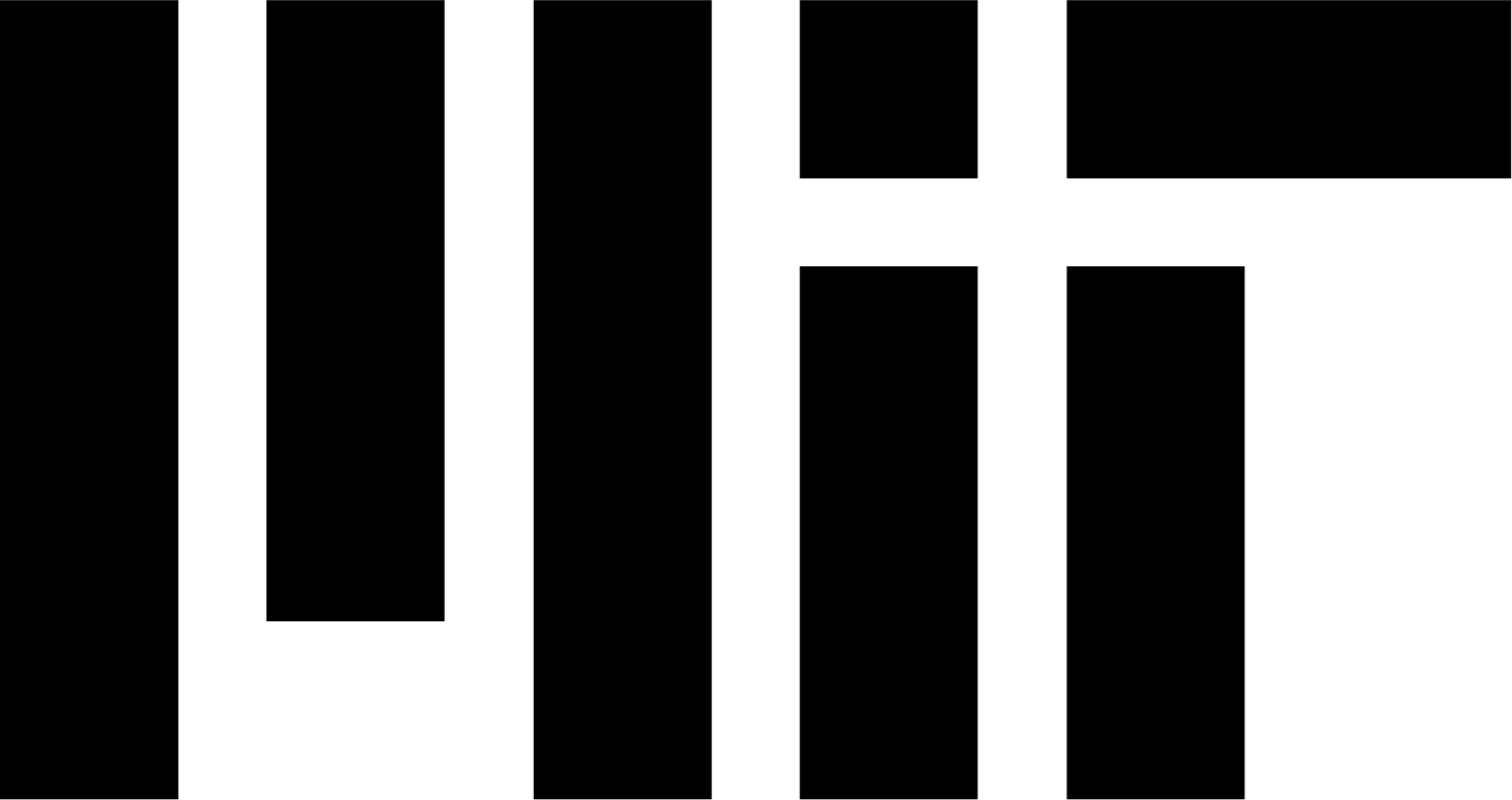
Case Studies
- Engineering disasters
- Covid vaccine distribution among wealthy and poor countries
- A NYC skyscraper in danger of collapse
- The Volkswagen emissions scandal
- Addressing climate change
- Racism and informed consent in clinical trials
- Using CRISPR to manipulate animal and human genomes
- Effects of social media on people’s lives and on society
- The power, promise, and dangers of rapidly advancing AI capabilities
We work hard to find short readings that are interesting and thought-provoking.

Emerging Technologies and Ethical Issues in Engineering: Papers from a Workshop (2004)
Chapter: state of the art in engineering ethics methodologies for case studies in engineering ethics, state of the art in engineering ethics.
This page intentionally left blank.
Methodologies for Case Studies in Engineering Ethics
CHARLES E. (ED) HARRIS
Texas A&M University
The methodology presented in this paper has two aspects: analytical and problem-resolution. The analytical aspect suggests concepts for identifying the types of issues in a case—factual issues, conceptual issues, application issues, and moral issues. The problem-resolution aspect involves “bottom-up” techniques and “top-down” techniques. Bottom-up techniques rely on moral intuitions rather than moral theories. These methods include weighing, casuistry, and finding a creative middle way. Top-down methods appeal to a general moral theory and are sometimes useful in applied ethics. Both methods are familiar in Western philosophy as utilitarianism and the ethics of respect for persons.
Most education in ethics and professional responsibility relies heavily on case studies. This is true of medical, legal, nursing, veterinary, dental, and business ethics. It is also true of engineering ethics. Students in my large classes in engineering ethics (approximately 600 each semester) often tell me that their favorite part of the course is the case studies, reflecting the practical orientation that characterizes all professionals. The ethical and professional concerns of people who defend clients in court, treat people who are sick, manage companies, fill teeth, operate on pets, and design bridges can best be addressed by way of cases that focus on activities relevant to their usual activities.
I find it useful to divide cases into three categories: micro-cases, macro-cases, and exemplary cases. Broadly defined, micro-cases are cases in which an individual professional makes decisions involving ethical or professional concerns. These decisions may have a limited impact or a wide-ranging impact. For example, John must decide whether he will accept a rather large gift from a
supplier. Alison must decide whether she is going to take part in a project that is environmentally destructive.
Macro-cases typically involve social policies, legislation, governmental administrative decisions, or the setting of policies for professional societies. In engineering, these policies usually have to do with the impact of technology on society. How should privacy be protected with respect to computers? How should computer crimes be treated? What kind of intellectual property rights should be granted to the creators of software? What policies should engineering societies adopt with respect to the environment? Should the cloning of human beings be pursued?
Exemplary cases involve situations in which professionals act in an admirable way in their professional capacities. Exemplary cases have two characteristics. First, decisions have already been made and a course of action already taken. In other words, no dilemma remains to be resolved. In exemplary cases, the dilemma has already been resolved in an exemplary way. Second, the behavior exhibited is praiseworthy, either because it is a paradigm of right action or because the action is taken in the face of adversity or because the action goes beyond what might be considered required under the circumstances. Exemplary cases can involve micro- or macro-issues.
Here is an example of a micro-case involving exemplary action. In the late 1930s, a group of General Electric engineers spent time outside their normal working hours to develop the sealed-beam headlight. Apparently, the prevailing consensus was that the headlight was not technically feasible. Nevertheless, the engineers accomplished their task. Sometimes, an engineer who simply performs what appears to be his or her professional duty can also exhibit exemplary action. Roger Boisjoly, an engineer who protested the launch of the Challenger at considerable risk to his career, exhibited exemplary action.
METHODS OF ANALYSIS
Methods of analysis can be used to identify the types of issues involved in a case: factual issues, conceptual issues, application issues, and moral issues.
Factual Issues
A factual issue has two characteristics: (1) it is a disagreement over a matter of fact, and (2) this matter of fact is crucial to resolving the problem. A fact, unlike a factual issue, is a matter that has already been settled and is uncontroversial. Factual issues arise, for example, in cases in which we do not know how much a certain modification in a design will cost or what the effects of a certain course of action will be or how accurate a given test is or what risks are involved in a certain technology.
In the real world, empirical research should be used to resolve a factual
issue. Some factual issues, however, cannot be resolved by investigation. Some technological questions cannot be answered, such as questions about consequences that can only be answered in the future. In these cases, the most realistic approach is to leave the factual question unanswered and make a decision in the context of factual uncertainty. Especially in the classroom, it is not appropriate to make assumptions that resolve an issue in a way that could not be done in a real-world context.
Here is a case involving a factual issue. A new law requires that the lead content of drinking water be less than 1.0 part per billion (ppb). Melissa is a safety engineer who has tested her company’s drinking water by two methods. Method A gives a reading of 0.85 ppb; Method B gives a reading of 1.23 ppb. She must fill out a government report describing the quality of her company’s water. If the lead content exceeds 1.0 ppb, her company will be fined. She must decide whether to report the results of Method A or Method B. In this case, her decision is based primarily on the factual issue of which method is the most accurate.
It is important to keep in mind that many controversies that appear to be about moral issues are traceable primarily to disagreements over facts. Two people may disagree about the proper course of action because they disagree about the consequences of a given course of action. Two engineers may disagree about which of two designs is ethically more acceptable because they disagree about which one is safer. They may agree on the moral parameters of the case, namely that the safest design should be chosen, but they may disagree over which design is safer. Although such a disagreement might be called a moral or ethical disagreement, it is really a disagreement over factual issues, unless they disagree over the definition of “safe.” Engineering students are often inclined to say that ethics are “soft” (in cases where a factual disagreement cannot be settled). It is important, therefore, to realize that sometimes, even though moral parameters may be agreed upon, there may be irresolvable disagreements over facts.
Conceptual Issues
A conceptual issue is (1) a disagreement over a definition of a concept that is (2) crucial to resolving a problem. Two engineers may differ over whether a design is safe because they have different definitions of (i.e., criteria for) “safe.” They may disagree about whether a given action is a conflict of interest because they may have different definitions of “conflict of interest.” They may disagree over whether something is a bribe because they have different conceptions of a bribe and how to distinguish one from extortion or “grease money.”
Here is an example of a case involving a conceptual issue. Sally is a mechanical engineer employed by General Motors to design automotive gas tanks. According to government safety standards, the automobile must be able to survive a “moderate impact” with no chance of the gas tank catching fire. In recent
tests, in cars that crashed at 35 miles per hour (mph) the gas tanks did not catch fire, whereas in 20 percent of cars that crashed at 45 mph they did. She knows she must first determine how the government defines “moderate impact.”
Probably the most effective way to come up with a definition is to derive one from paradigm, or standard, cases. A paradigm case of a bribe might be one in which an engineer accepts a large sum of money to specify a product that is not the most appropriate one for the design. From this standard case, we might derive a working definition of a bribe as an offer of something of value to induce a person to perform an action that is morally inappropriate to his or her office or role. If definitions differ, it may be possible to argue that one definition is more in accord with standard practice or paradigms or that one definition is more useful or easier to apply. If there are continuing differences over conceptual issues, the important thing is to be aware of the differences.
Another important consideration is whether a concept is “moralized” or “nonmoralized.” A moralized concept includes an implicit moral judgment that the action to which the concept refers is either morally acceptable or unacceptable. When we label something as a bribe, we make a presumptive judgment that it is wrong, because, as we have seen, we usually define bribery as giving something of value to induce a person to perform an action that is morally inappropriate to his or her office or role. Breaking confidentiality, for example, is prima facie morally wrong, because we define it as violating a commitment or breaking a rule that is morally justified.
Of course, the fact that an action is a bribe makes only a presumptive case that it is morally wrong. There might be a moral consideration that overrides the fact that we are giving a bribe. Bribing a Nazi guard to get your grandmother out of a concentration camp would be morally permissible, because the office of a concentration-camp guard is itself morally illegitimate. Breaking confidentiality is prima facie bad, but it may be justified when the safety of the public is at stake.
Some concepts, by contrast, appear to be morally neutral. We may call them nonmoralized concepts. In deciding whether computer software is a work of authorship (like a book) or an invention (like a machine), we must define “work of authorship” and “invention.” These definitions do not appear to involve moral judgments about the value of these two types of creative products.
Application Issues
An application issue is a question of whether or not a concept applies to a given situation. An application issue is (1) a disagreement over the application of a concept in a particular situation that is (2) crucial to resolving a problem. I just referred to the question of whether computer software should be classified as a work of authorship or an invention. This is an application issue, because the question is whether the concept of a work of authorship (once we have defined it) or the concept of invention (once we have defined it) best applies to software. Of
course, neither of these concepts applies particularly well, and this is characteristic of application issues. An application issue is one in which we have trouble deciding whether a concept applies in a given situation. We have no trouble deciding whether killing a person by stabbing him in the back to get his money is murder, but we do argue over whether euthanasia is murder. Similarly, engineers might argue over whether attending a conference in Hawaii sponsored by a vendor is a bribe, or whether giving one client general information about another client’s projects is a breach of confidentiality.
Here is an example of an application issue. Larry is an aerospace engineer who is a member of the Quaker religion, which is committed to nonviolence. Larry was hired by his firm to design passenger airplanes, but his boss has recently reassigned him to design military fighters. Larry must decide whether to accept the new assignment or quit and find a new job. He must decide whether his commitment to “nonviolence” requires not only that he refrain from operating military aircraft, but also that he refrain from designing them.
Application issues often arise in the law. The Constitution requires that citizens be given a “speedy” trial. If a citizen is kept in jail for two years without a trial, is this a denial of his constitutional right to a speedy trial? A city has a law against “vehicles” in the park, and a child rides a skateboard into the park. Is a skateboard a “vehicle”?
Moral Issues
A fourth type of issue is a genuine moral issue, usually a conflict between two or more values or obligations. Engineer Tom does not want to give the customs officer money, but he needs to get something through customs to complete a project that is important for the local economy as well as for his firm. Here Tom faces a conflict between his obligation not to pay bribes or grease money and his obligation to complete the project. Engineer Jane is not sure whether she should design a slightly safer product that will be considerably more expensive for consumers. Jane faces a conflict between her obligation to produce safe products and her obligation to produce inexpensive products.
Here is another example of a moral issue. Harry works for a large manufacturer in the town of Lake Pleasant. His company employs half of the people in the town, which is in an otherwise economically depressed part of the country. Harry discovers that his company is dumping chemicals into the local lake that may pose a health hazard. The lake is the town’s main source of drinking water. Harry is told that the company dumps these chemicals into the lake because disposing of them in any other way would be so expensive that the plant would have to close. Should Harry report his company’s practice to the local authorities? Harry faces a conflict between his obligation to the health of the citizens of Lake Pleasant and his obligation to the economic welfare of the citizens of Lake Pleasant.
BOTTOM-UP METHODS OF PROBLEM RESOLUTION
Sometimes moral conflicts remain even after all of the factual, conceptual, and application issues have been resolved. Therefore, we should consider some methods for resolving moral conflicts. Following a nomenclature often used in medical ethics, I find it useful to divide methods of resolving conflicts into bottom-up and top-down methods. Bottom-up methods start on a fairly concrete level, close to the details of the case, and work toward a solution. These methods adopt generally-accepted, intuitively plausible moral concepts that are a part of the moral thinking of most people, at least in our society. They work on what R.M. Hare, a prominent moral philosopher, would call the intuitive level of moral thinking (Hare, 1981).
Weighing or Balancing
The simplest bottom-up method might be called balancing or weighing. Reasons for alternative evaluations are considered, or “weighed,” and the alternative with the most convincing reasons is selected. We examine the reasons for and against universal engineering registration and, all things considered, find one set of reasons more convincing than the others. If we find the reasons on both sides equally convincing, either option is morally permissible.
Engineer Jane, who owns a civil engineering design firm, has a chance to bid on part of the design work for a fertilizer plant in Country X. The plant will increase food production in a country where many people do not have sufficient food. Unfortunately, the plant will have some bad environmental effects, and correcting the problems will make the fertilizer more expensive, too expensive for farmers in Country X. Should she bid on the design? She may decide to list considerations in favor of submitting a bid and considerations against it. On the one hand, she will be contributing to the saving of many lives, the economic development of Country X, and the economic advancement of her firm. On the other hand, she will be contributing to the environmental degradation of Country X, and her firm may receive some negative publicity. She must attempt to balance these two sets of considerations and determine which has the greater moral “weight.” Balancing does not provide specific directions for comparing alternative courses of action, but sometimes such direction is not necessary.
The Method of Casuistry or Line Drawing
The second method is casuistry, or what I call line drawing. Although the method I have developed for students is more formal than would ordinarily be used in real-world situations, I believe the underlying ideas are what we might call moral common sense. Casuistry has a long history in the moral tradition of the West, going back at least to Cicero. Recently, casuistry has been used to make
decisions in medical ethics. Congress established the National Commission for the Protection of Human Subjects of Biomedical Research in 1974. Deep religious and philosophical differences between members of the commission made progress difficult until the group decided to talk about specific examples of morally objectionable experiments (“paradigm cases”). The members found that they could agree on the characteristics (“features”) of these experiments that made the experiments wrong. Some members of the commission recognized that they were using the ancient technique of casuistry, and the method subsequently came to be accepted in medical ethics cases.
In casuistry, a decision about what to do or believe in a problematic situation is made by comparing the problematic situation with a clear situation. The comparison—reasoning by analogy—is made by comparing the features of the test case with the features of a “positive paradigm case” and a “negative paradigm case.” A feature is a characteristic that distinguishes a paradigm case from the test case, the subject of the analysis. A negative paradigm is a clear or uncontroversial example of an action that is wrong or morally impermissible; a positive paradigm is a clear and uncontroversial example of an action that is right or morally permissible.
Casuistry, or line drawing, can be used to resolve two distinct kinds of questions. First, it can be used to resolve an application issue, for example, to determine whether an action really constitutes a bribe. Second, it can be used to resolve a moral issue, for example, once we have determined that an offer really is (or is not) a bribe, whether or not we should accept it or offer it. Of course, in most circumstances, a bribe should not be accepted or offered, but offering or accepting a bribe might be justifiable in a few cases. To cite an earlier example, during World War II, if I could have bribed a Nazi guard to get my grandmother out of a concentration camp, I might decide that offering a bribe is justifiable.
The following example illustrates how casuistry can be used to settle an application issue and to settle a moral issue. Denise is an engineer at a large construction firm. Her job requires that she specify rivets for the construction of a large apartment building. She has the power to make the decision by herself. After some research and testing, she decides to use ACME rivets for the job, because, indeed, they are the best product. The day after she orders the rivets, an ACME representative visits her and gives her a voucher for an all-expense paid trip to the ACME Technical Forum in Jamaica. The voucher is worth $5,000, and the four-day trip will include 18 hours of classroom instruction, time in the evening for sightseeing, and a day-long tour of the coastline. The time will be roughly divided between education and pleasure. Does this trip constitute a bribe? A line-drawing analysis might look like Table 1 .
In a line-drawing analysis, one must decide not only where to place the “x’s” on the spectrum, but also how much “weight” or importance to give each “x.” Some features may be more important than others. For example, one might decide that because the offer was made after the decision to buy ACME rivets the
TABLE 1 Line-Drawing Analysis for Resolving an Application Issue
| Features | Positive Paradigm | Test Case | Negative Paradigm |
| Gift Size | $1.00 | _ _ _ _ _ _ _X_ _ | $ 5,000 |
| Timing | After decision | X_ _ _ _ _ _ _ _ _ | Before decision |
| Reason | Education | _ _ __ _X _ _ _ _ | Pleasure |
| Power to make decisions | With others | _ _ _ _ __ _X _ _ | Alone |
| Quality of product | Best | _X_ _ _ _ _ _ _ _ | Worst |
gift cannot be considered a bribe. It may be a bribe, however, to other engineers, who may believe that buying ACME products results in offers of nice trips. However, to Denise it is certainly not a paradigm bribe.
Line-drawing analysis can also be used to determine whether Denise should take the trip. Even if she decides the trip is not a bribe, she might still decide not to accept the offer. The features important to this decision may be different from the ones in the first analysis, although there may be some overlap. In the second analysis, it will be important to consider the influence of the gift on future decisions by Denise and other engineers, the company policy on accepting gifts, and the appearance of bribery if the gift is accepted. Some features from the first analysis, such as the educational value of the technical forum, would be relevant here too. Table 2 is a line-drawing analysis to resolve the moral question of whether Denise should accept the offer.
According to the analysis in Table 2 , the issue is not clear. However, the problems associated with accepting the gift are serious enough that Denise probably should not accept it. In the next section, I shall suggest conditions under which accepting the gift would probably be morally permissible.
TABLE 2 Line-Drawing Analysis for Resolving a Moral Issue
| Features | Positive Paradigm | Test Case | Negative Paradigm |
| Influence on future decisions | None | _ _ _ _ _X _ _ | Great |
| Company policy | May accept | _ X _ _ _ _ _ _ | May not accept |
| Appearance | No problem | _ _ _ _ _ X_ _ | Appearance of a bribe |
| Educational value | Great | _ _ X _ _ _ _ _ | Minimal |
But first, here are some concluding thoughts about the method of casuistry. In general, the more features that are included in an analysis, the better. For the sake of simplicity, I used only four or five, but the more features you include, the more helpful and accurate the analysis becomes.
Casuistry is an inherently conservative method. In arriving at paradigm cases for comparison with test cases, we assume that our intuitive, common sense moral judgments are correct. This assumption is usually valid, but not always, particularly in areas where morality is changing or when the case involves a novel experience. It might be difficult to find uncontroversial paradigm cases for some issues in environmental ethics, for example.
For casuistry to work well in the context of a profession, the professional community must agree on paradigms of acceptable and unacceptable practice. Engineers must agree on paradigmatic examples of acceptable and unacceptable practice with respect to conflicts of interest, confidentiality, and other issues. In the area of medical ethics, for example, there is now widespread agreement about whether actions taken in certain publicized cases were moral or not. These agreed-upon bench marks can then be compared to more controversial cases. I believe there has been less discussion of bench mark cases in engineering.
Creative Middle Ways
A third method of resolving a problem is finding a creative middle way. Suppose there is a conflict between two or more legitimate moral obligations and that two of them appear to be at loggerheads. Sometimes by creative thinking, it is possible to find a course of action that satisfies both, although perhaps not in the way that was originally supposed. For example, a plant might be emitting some dangerous pollutants that are environmentally harmful, but completely eliminating them would be so expensive that the plant would have to close, throwing many local inhabitants out of work. Assuming there is an obligation both to preserve jobs and to protect the environment, a creative middle way might be to eliminate the worst pollutants and forego a complete cleanup until more economical means of doing so can be found. This alternative would be particularly attractive if the remaining pollutants would not cause irreversible damage to the environment or to human health.
This solution, and most creative middle-way solutions, involves compromise. Environmentalists might not be completely satisfied with this solution because not all of the pollutants will be removed. Plant managers might not be completely satisfied because the solution will still involve considerable expenditures for pollution control. Nevertheless, environmentalists will accomplish something, and the plant owners can remain in the town and even build up a considerable amount of public good will.
In the line-drawing analysis presented in the previous section, there might also be a creative middle way. Suppose we take the two competing values: (1) the
educational and recreational value of the trip; and (2) avoiding the appearance of bribery and undue influence on professional judgment. Denise’s manager might suggest: (1) that she take the trip but that the company pay her expenses; and (2) that engineers who were not involved in the decision also be allowed to take the trip. Furthermore, it must be understood that company engineers will be allowed to attend the forum, at the company’s expense, whether or not the company buys ACME products. This arrangement would only make sense, of course, if the forum is of very great technical value. This solution would allow Denise to honor competing obligations in a creative way.
Two limitations of this method come to mind. First, sometimes there is no creative middle way, even if it is desirable. In the example cited above, all of the pollutants may be so damaging to the environment that no half-way measures will work. Furthermore, there might not be a way to do the cleanup more economically. In that case, the plant might just have to close. In the line-drawing example, Denise’s company might not be able to pay her expenses. A second limitation is that sometimes the creative middle way is not morally appropriate. Sometimes one of the options is so morally repugnant that we must choose the other one. Still, a creative middle way is often a good solution to a complex, practical moral problem.
TOP-DOWN METHODS OF RESOLUTION
In some cases, the appeal to moral common sense may not be sufficient. In those cases, it may be useful to appeal to more fundamental moral ideas, such as those developed in philosophical theories. Although the role of moral theory in applied or practical ethics is controversial, I believe moral theorists have attempted to find fundamental moral ideals that can generate or explain all or most of our common-sense moral ideas. This goal has been only partially achieved, because there are at least two prevalent moral theories today, and neither one can explain the fundamental ideas of common morality in a completely satisfactory way. These two theories are utilitarianism, usually associated with Jeremy Bentham and John Stuart Mill, and the ethics of respect for persons, usually associated with Immanuel Kant. The main idea behind utilitarianism is to maximize overall human well-being; and the main idea behind the ethics of respect for persons is to respect the rights and moral agency of individuals.
Although the existence of two theories rather than one may be an embarrassment to theorists, practical ethicists can take a more positive attitude because the conflict between the ideas behind these two theories often arise in real-world moral controversies. Common morality, at least in the West, may not be a seamless web. In fact, it may be composed of two strands: (1) considerations having to do with utility, or the well-being of the greatest number of people; and (2) considerations having to do with justice and the rights of individuals.
An understanding of moral theory could serve several functions in practical
ethics. First, the two perspectives can often be helpful for identifying and sorting out different types of arguments and for recognizing that different types of arguments have deep moral roots. In arguments for and against strict protections for intellectual property, for example, knowing that some arguments are utilitarian can be helpful. From the utilitarian perspective, protecting intellectual property promotes the flourishing of technology and, thereby, the good of society. Utilitarian arguments can also be made that strong protections for intellectual property limit the sharing of new ideas in technology and are thereby detrimental to the general good. Arguments from the respect-for-persons perspective often focus on the individual’s right to control, and reap the profits from, the fruits of his or her own labor, regardless of the impact on the larger society.
Second, understanding these fundamental, yet divergent, moral perspectives often enables an ethicist to anticipate a moral argument. Just thinking about the two theories and the kinds of arguments they would support could have led one to expect that some arguments regarding intellectual property would take the utilitarian approach and others would take the rights-of-ownership approach.
Third, familiarity with these two perspectives can sometimes help in determining whether there has been closure on a moral issue. If arguments from both perspectives lead to the same conclusions, we can be pretty confident that we have arrived at the right answer. If the arguments lead to different conclusions, the discussion is likely to continue. When different conclusions are reached, there is no algorithm, unfortunately, for deciding which moral perspective should prevail. In general, however, the Western emphasis on individual rights and respect for persons takes priority, unless harm to individuals is slight and the utility to society is very great. With these considerations in mind, we can now look at the two moral theories.
The Ethics of Utilitarianism
A principle of utilitarianism is that the right action will have the best consequences, and the best consequences are those that lead to the greatest happiness or well-being of everyone affected by the action. Consider the following case. Kevin is the engineering manager for the county road commission. He must decide what to do about Forest Drive, a local, narrow, two-lane road. Every year for the past seven years, at least one person has crashed a car into trees close to the road and been killed. Many other accidents have also occurred, causing serious injuries, wrecked cars, and damaged trees. Kevin is considering widening the road, which would require that 30 trees be cut down. Kevin is already receiving protests from local citizens who want to protect the beauty and ecological integrity of the area. Should Kevin widen the road?
In this case, the conflicting values are public health and safety on the one hand and the beauty and ecological integrity of the area on the other. Let us suppose that widening the road will save one life and prevent two serious injuries
and five minor injuries a year. Not widening the road will preserve the beauty and ecological integrity of the area. Even though the preservation will increase the happiness of many people, the deaths and injuries are far more serious negative consequences for those who experience them. Therefore, the greatest total utility is probably served by widening the road.
Cost/benefit analysis is a form of utilitarianism. I sometimes refer to it as “utilitarianism with the numbers.” Instead of maximizing happiness, the focus is on balancing costs and benefits, both measured in money, and selecting the option that leads to the greatest net benefit, also measured in money. Consider an earlier case. ACME manufacturing has a plant in the small town of Springfield that employs about 10 percent of the community. As a consequence of some of its manufacturing procedures, the ACME plant releases bad-smelling fumes that annoy its neighbors, damage the local tourism trade, and have been linked to an increase in asthma in the area. The town of Springfield is considering issuing an ultimatum to ACME to clean up the plant or pay a million-dollar fine. ACME has responded that it will close the plant rather than pay the fine. What should Springfield do?
A cost/benefit analysis might show the costs of and benefits of not levying the fine and keeping the plant open ( Table 3 ) and or levying the fine and losing the plant ( Table 4 ).
According to these analyses, the economic consequences of fining ACME would be much greater than the consequences of not fining ACME. Thus, the fine should not be levied.
There are two major problems with utilitarianism. One is that an accurate analysis requires a lot of factual information. This is especially evident in the cost/benefit analyses above. One must know the amounts to assign to the various costs and benefits. Even in an analysis that is not done in the cost/benefit way, the consequences of various courses of action must be known before the course of action that will have the greatest overall utility can be known. A second problem
TABLE 3 Cost/Benefit Analysis of Not Levying the Fine
| Costs: | |
| Health expenses | $1,000,000 |
| Nuisance odor | $50,000 |
| Decline in housing values | $1,000,000 |
| Decline in tourism | $50,000 |
| Benefits: | |
| Wages | $10,000,000 |
| Taxes | $2,000,000 |
| Total | +$9,900,000 |
TABLE 4 Cost/Benefit Analysis of Levying the Fine
| Costs: | |
| Loss of wages | $10,000,000 |
| Loss of tax revenue | $2,000,000 |
| Decline in housing values | $2,000,000 |
| Benefits: | |
| Fine | $1,000,000 |
| Increase in tourism | $50,000 |
| Health savings | $900,000 |
| Total | −$12,050,000 |
is that a utilitarian analysis can sometimes justify unjust consequences. For example, a decision not to force the plant to stop polluting will result in some people getting sick, even though overall utility will be maximized. These problems suggest that a complete analysis should include the ethics-of-respect principle.
The Ethics of Respect for Persons
From the utilitarian point of view, harm to one person can be justified by a bigger benefit to someone else. In the ethics of respect for persons, there are some things you may not do to a person, even for the benefit of others. The fundamental idea in the ethics of respect for persons is that you must respect each person as a free and equal moral agent—that is, as a person who has goals and values and a right to pursue those values as long as he or she does not violate the similar rights of others.
As this formulation suggests, the ethics of respect for persons emphasizes the rights of individuals, which are formulated, among other places, in various United Nations documents. Individual rights include the right to life and to the security of one’s person, the right not to be held in slavery, the right to freedom of thought and expression, and so forth. The problem with this formulation is that it does not give any clear indication of which rights are most important. When rights conflict, it is important to know which ones are most important.
Alan Gewirth, a contemporary philosopher, has suggested that there are three levels of rights (Gewirth, 1978). Level I, the most important rights, includes the right to life, the right to bodily integrity, and the right to mental integrity. I would add to those the right to free and informed consent to actions that affect one. Level II includes the right not to be deceived, cheated, robbed, defamed, or lied to. It also includes the right to free speech. Level III includes the right to acquire property and the right to be free of discrimination. For Gewirth, Level I rights are the fundamental rights necessary for effective moral agency. Level II
rights are necessary to preserving one’s moral agency. Level III rights are necessary to increasing one’s level of effective moral agency. Whether or not one accepts this arrangement, most of us would probably recognize that some rights are more important than others.
Consider the following case. Karen, who has been working as a design engineer under Andy, has learned that he is about to be offered a job as head safety inspector for all of the oil rigs the company owns in the region. Karen worries that Andy’s drinking may affect his ability to perform his new job and thereby endanger workers on the oil rigs. She asks Andy to turn down the new assignment, but he refuses. Should Karen take her concerns to management? In this case, Andy’s right to advance his career (by trying to acquire property), which is a Level III right, conflicts with the workers’ rights to life and bodily integrity, which are Level I rights. In this conflict, the rights of the workers are more important, and Karen should take her concern to management.
In arbitrating conflicts between rights, two additional issues should be kept in mind. First, there is a distinction between violating and infringing a right. A right is violated if it is denied entirely. I violate your right to life if I kill you. A right is infringed if it is limited or diminished in some way. A plant infringes on my right to life if it emits a pollutant that increases my risk of dying of cancer. Second, rights can be forfeited by violating or perhaps infringing on the rights of others. I may forfeit my right to life if I kill someone else. I may forfeit some right (perhaps the right to free movement) if I steal from others and thus infringe on or violate their right not to be robbed.
Finally, the Golden Rule is also a principle associated with the ethics of respect for persons. Most cultures have a version of the Golden Rule. The Christian version requires that we treat others as we would have them treat us. In the Islamic version, no man is a true believer unless he desires for his brother that which he desires for himself. If we consider ourselves to be moral agents, the Golden Rule requires that we treat others as moral agents as well.
There are two primary problems with the ethics of respect for persons. First, the rights test and the Golden Rule are sometimes difficult to apply. We must determine when there is a conflict of rights, which rights are most important, and whether rights have been violated or merely infringed upon. With the Golden Rule, we must assume that others have the same values we do. If they do not, treating them as we would wish to be treated may be unfair. Second, it may be justifiable at times to allow considerations of utility to override considerations of the ethics of respect for persons, especially if the infringements of rights are relatively minor and the benefit to the general welfare is great.
I have presented a number of tools for analyzing and resolving ethical problems. The important thing to keep in mind, however, is that these tools cannot be
used in a mechanical way. They are not algorithms. One must decide if the issue to be resolved is really factual or conceptual, for example. One must also decide when the line-drawing method or finding a creative middle way is most appropriate and when an issue can best be approached as a conflict between general human welfare (utility) and the rights of individuals (the ethics of respect for persons). When there is such a conflict, there is no mechanical way to determine which perspective should be considered most important. In the West, we accord great importance to individual rights, but they do not always take precedence. The techniques and methods I have described are helpful for thinking about ethical issues, but they are no substitute for moral insight and moral wisdom.
Gewirth, A. 1978. Reason and Morality. Chicago: University of Chicago Press.
Hare, R.M. 1981. Moral Thinking: Its Levels, Method, and Point. Oxford, U.K.: Oxford University Press.
Engineers and ethicists participated in a workshop to discuss the responsible development of new technologies. Presenters examined four areas of engineering—sustainability, nanotechnology, neurotechnology, and energy—in terms of the ethical issues they present to engineers in particular and society as a whole. Approaches to ethical issues include: analyzing the factual, conceptual, application, and moral aspects of an issue; evaluating the risks and responsibilities of a particular course of action; and using theories of ethics or codes of ethics developed by engineering societies as a basis for decision making. Ethics can be built into the education of engineering students and professionals, either as an aspect of courses already being taught or as a component of engineering projects to be examined along with research findings. Engineering practice workshops can also be effective, particularly when they include discussions with experienced engineers. This volume includes papers on all of these topics by experts in many fields. The consensus among workshop participants is that material on ethics should be an ongoing part of engineering education and engineering practice.
READ FREE ONLINE
Welcome to OpenBook!
You're looking at OpenBook, NAP.edu's online reading room since 1999. Based on feedback from you, our users, we've made some improvements that make it easier than ever to read thousands of publications on our website.
Do you want to take a quick tour of the OpenBook's features?
Show this book's table of contents , where you can jump to any chapter by name.
...or use these buttons to go back to the previous chapter or skip to the next one.
Jump up to the previous page or down to the next one. Also, you can type in a page number and press Enter to go directly to that page in the book.
Switch between the Original Pages , where you can read the report as it appeared in print, and Text Pages for the web version, where you can highlight and search the text.
To search the entire text of this book, type in your search term here and press Enter .
Share a link to this book page on your preferred social network or via email.
View our suggested citation for this chapter.
Ready to take your reading offline? Click here to buy this book in print or download it as a free PDF, if available.
Get Email Updates
Do you enjoy reading reports from the Academies online for free ? Sign up for email notifications and we'll let you know about new publications in your areas of interest when they're released.

Engineering Ethics
The Markkula Center for Applied Ethics explores ethical issues in engineering.
Focusing on ethical issues confronting professionals, the Center offers materials to help engineers identify and respond to dilemmas they face. Offering case studies, curriculum, and commentary for engineering students, educators, and practitioners.
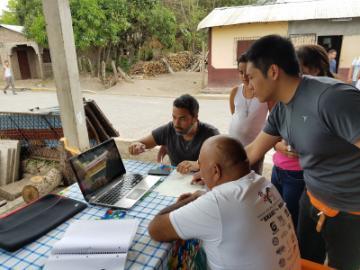
Developed and managed responsibly, generative AI can be used to expand our creative capabilities and push the boundaries of what is possible.
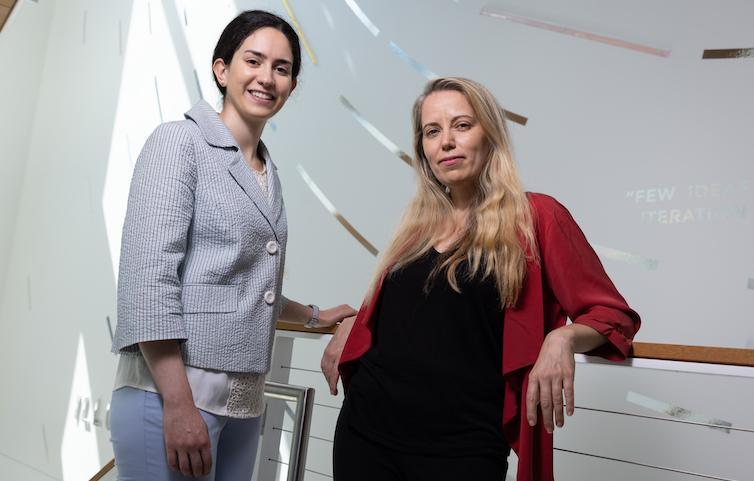
Santa Clara team identifies male “brilliance bias” in world's top AI robowriter. Next step: Solving the problem.
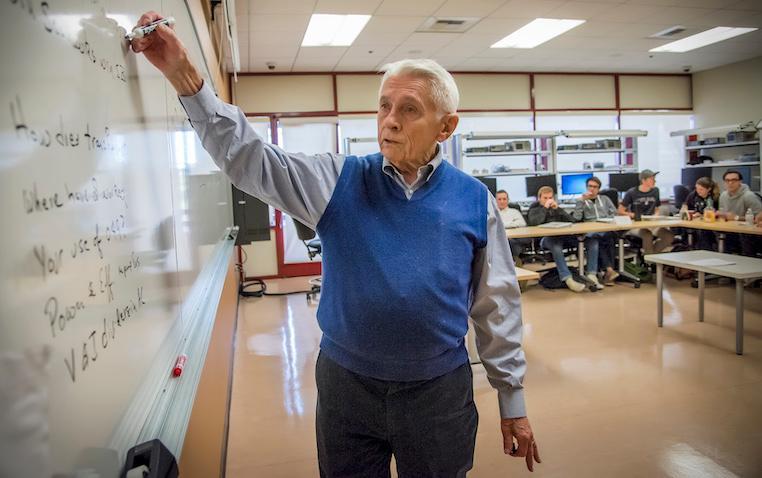
Set to retire this summer, the founder of three major SCU electrical engineering labs reflects on six decades of teaching.

Our Responsible Computer Science (RCS) project is a collaboration between computer science and software engineering faculty as well as staff members of the Markkula Center for Applied Ethics. This page offers a variety of teaching resources for faculty in computer science or computer engineering looking to integrate coverage of ethics into curricula and student-focused events.
Continue Reading
Santa Clara University was awarded a grant in April 2019 as one of the winners of the Mozilla Responsible Computer Science Challenge. The grant is aimed at promoting innovation and experimentation in the integration of ethics into undergraduate Computer Science curricula. This is a summary of what we have been doing, and some of the plans ahead.
See Our Progress
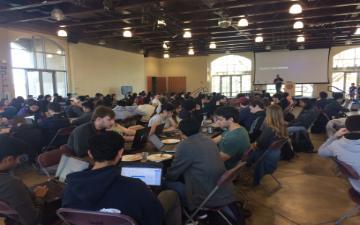
This ethics module for cybersecurity-related courses includes a reading, homework assignments, and case studies, all designed to spark a conversation about ethical issues that students will face in their role as cybersecurity professionals.
Designed to be incorporated in data science courses, this module includes a reading, homework assignments, and case studies to spark a conversation about ethical issues that students will face in their role as data practitioners.
Designed for use in software engineering courses, this module includes a reading, homework assignments, case studies, and classroom exercises that will prompt conversation about ethical issues that students will face in their role as software engineers.

This story of Occidental Engineering is provided by Michael McFarland, visiting scholar at the Ethics Center and former president of College of the Holy Cross. It is a fictional case study designed to illustrate several important points about the complexity and responsibilities involved in day-to-day ethical judgments for engineers.
Find ethics case studies on topics in Engineering ethics including intersections in bioengineering, civil engineering, electrical engineering, and pressures in the public and private sectors.
Find ethics case studies on topics in Internet ethics including privacy, hacking, social media, the right to be forgotten, and hashtag activism.
Find case studies illustrating real-world dilemmas in technology and ethics including artificial intelligence, data, virtual reality, and encryption.
Articles and research addressing the ethics of artificial intelligence, the following selection of readings aims to highlight some key issues.
Free materials to encourage and support ethics training workshops for designers and engineers in technology companies. Supported by a grant from Omidyar Network’s Tech and Society Solutions Lab.
A resource to assist senior mechanical engineering students at Santa Clara University in identifying and navigating ethical considerations that arise over the course of the senior design project.

Site Search
- How to Search
- Advisory Group
- Editorial Board
- OEC Fellows
- History and Funding
- Using OEC Materials
- Collections
- Research Ethics Resources
- Ethics Projects
- Communities of Practice
- Get Involved
- Submit Content
- Open Access Membership
- Become a Partner
- Advanced Search
- Webinar Series
Case Studies for Engineering Ethics Across the Product Life Cycle
This activity is considered an NAE Exemplar in Engineering Ethics Education and was included in a 2016 report with other exemplary activities. This activity uses reviewed case studies and life cycle assessment tools to help students develop needed ethical decision-making skills.
Exemplary features: Adaptability for use in secondary education; extensive collection of cases on the ethics of lifecycle impacts and sustainability
Why it’s exemplary: Real-world engineering decision making involves multiple actors and, for each, ethical considerations may arise at multiple levels—personal, professional, societal, or global. Our program of case studies and educational materials is exemplary in its interdisciplinary foundation, created collectively by engineers, policy experts, business professionals, and ethicists to provide clear examples for rising engineers to appreciate ethical issues from multiple angles. Accompanying materials are rigorously assessed in the classroom by internal and external evaluators based on national educational goals and guidelines, with versions developed to suit a variety of instructional modes. Full cases are designed for university engineering students, while streamlined versions for secondary schools spread an awareness of lifecycle issues and environmental ethics early in formal education. Widespread dissemination using various media adds to national infrastructure for ethics education in engineering and environmental fields, with the goal of emphasizing societal ethics and indirect effects.
Program description: A central goal of engineering education is to provide students with an understanding of context for their designs and decisions. A common theme currently relates to the environment and public health, specifically what constitutes a fair distribution of emissions or impacts, who or what has value, and what exactly gets counted in an engineering analysis of benefits and costs. These questions can be quite effectively discussed in the context of lifecycle engineering, a design strategy that uses a “cradle-to-grave” approach to evaluate environmental and social impacts, incorporating material, energy, and economic flows as well as social and biological effects at different stages. While the use of lifecycle engineering and lifecycle assessment (LCA) tools is widespread, the modeling structure and interpretation of results involve ethical and value judgments that must be navigated carefully by the analyst and by the receiver of the results.
LCA is increasingly important in corporate and government decision making, yet there is a dearth of materials specifically designed to integrate ethics education into life cycle–oriented coursework. Our ethics education project centers on the integration of life cycle–oriented case studies in design, engineering, management, and public policy fields. Case studies are effective pedagogical tools, and particularly useful in enabling students to develop practical understanding of the ethical challenges they will face as practicing professionals by placing them in mock decision-making roles. We have conducted a thorough review of nearly 1,000 existing case studies from engineering, business, and public policy to determine common topics and themes that relate to product life cycles and environmental and health impacts. Our case studies cover current events and engineering design decisions that involve balancing local or direct effects with larger, indirect effects on society, including (a) mismanagement of industrial waste and ecological impacts from industrial accidents, specifically the inundation of several villages in Hungary from a large-volume spill of red mud, a byproduct of aluminum production (production stage); (b) the upstream implication of material selection for consumer electronics, specifically the tradeoffs between Au-coated antennas and GaIn liquid metal reconfigurable antennas, a new technology being piloted by handset manufacturers (design stage); (c) implementation of state-level policy around compact fluorescent bulbs, balancing state targets for energy efficiency, indirect emissions as a result of reducing electricity demand, and direct potential emissions of Hg during lamp breakage, both accidental and intentional (use and disposal stages); and (d) whether federal/state agencies could and should require labelling of nanomaterials in consumer products, drawing parallels with labelling efforts for pharmaceuticals and food (use and disposal stages).
Following typical case study methods, students are presented with an engineering or design decision that they need to make, accompanied by background material that provides technical, environmental, and policy context. An accompanying teaching note guides instructors with ideas for classroom instruction, emphasizing the ethical concepts that are relevant to the case and written with proper terminology in collaboration with the Ethics Institute at Northeastern and assessed by an external evaluator. Instructional materials and video footage presenting each case, as well as shorter versions for younger audiences, are being created and will be hosted at the Ethics Institute as an additional teaching resource. The creation of the case studies involved a multidisciplinary collaboration among faculty members as well as graduate students. Undergraduate students and high school teachers are assisting in the creation of versions appropriate for secondary schools. These cases have been designed as one-week modules to be incorporated in existing courses and ethics workshops.
The educational goals of this project are to:
(1) Create engaging, practical, and effective case study and workshop materials that examine ethical dimensions of LCA practice and communication, for use in courses in engineering, management, and social science;
(2) Evaluate the effectiveness of these materials through robust educational assessment while improving student learning; and
(3) Engage other secondary school and college/university instructors through demonstration and provision of instructional guides and resources to accompany the case study and workshop materials.
The overall purpose of the project is to enable engineering students and the general public to have an understanding and meaningful discussions of indirect impacts of their activities, and how to balance direct benefits and indirect impacts. Our life cycle–oriented, case-based approach to engineering ethics education will fill gaps in case study resources by addressing fundamental ethical principles and macro-ethical issues on sustainability topics, developing novel, robustly assessed educational materials where few currently exist.
Assessment information: Our case studies and workshops are being piloted in engineering, business, and public policy classrooms. We have also been working with the Center for Advancing Teaching and Learning through Research at Northeastern and our external assessment advisor, Dr. Michael Loui, to develop assessment instruments and evaluation schemes that can be used across all of the cases. We now have a scheme that covers the common ethical concepts introduced in the cases—distributive justice, weighting/balancing risks, moral status, the precautionary principle, responsibility to report, and exploitation. The evaluation scheme is based on the framework presented by the Ethical Reasoning Value rubric published by the Association of American Colleges and Universities and will be applied to five separate classes of students over the coming year in order to test learning outcomes. This project grew out of the team’s experience with trying to fit existing engineering ethics cases into a life cycle–based framework. To provide a baseline for evaluating the new case studies, a review of learning assessments was carried out in spring 2015 for a mechanical/industrial engineering course, which currently uses a case study–based ethics module about the Bhopal chemical disaster, and retrospectively for the 150+ students who have passed through the course over the past several years. Review of assignments and responses informed the creation of case study teaching notes and the draft evaluation scheme. Continuing assessment will allow the project team to adjust the cases and teaching materials as necessary and add further instructional guidance where learning objectives are not being met.
Additional resources:
- Devising State Policy on Compact Fluorescent Lamps: https://us.sagepub.com/sites/default/files/devising-state-policy-on-compact-fluorescent-lamps-case.pdf
Related Resources
Submit Content to the OEC Donate

This material is based upon work supported by the National Science Foundation under Award No. 2055332. Any opinions, findings, and conclusions or recommendations expressed in this material are those of the author(s) and do not necessarily reflect the views of the National Science Foundation.
Engineering Ethics Toolkit
- About Toolkits
- Intellectual Property Toolkit
- Accreditation and Quality Assurance Toolkit
- Enterprise Collaboration Toolkit
- Recruitment and Admissions Toolkit (Archive)
- Placements Toolkits
- EPC Degree Apprenticeships Toolkit
- Sustainability Toolkit
- Curriculum Development and Teaching Innovation Toolkit
- Leadership and Professional Development Toolkit
Find the right tool
Use the search to find the tools you need.
We currently recognise the following communities:
Visiting Professors: This is currently hosted as a LinkedIn group . Apply to join the community by using the tools on the Linked site.
If you would like to set up a new community under the auspices of the EPC, please contact [email protected] .
Use any of these to search toolkit contents
Select toolkits to search:
And/or search by keywords:
How about these widely used topics?
And/or type your own search:
Welcome to the EPC’s Engineering Ethics Toolkit. Here you will find our resource designed to help engineering educators embed ethics in teaching.

The Ethics Toolkit goes on tour
It's conference season! [Read More]

Blog: How Knovel can support information literacy
Navigating the digital landscape. [Read More]

Why information literacy is an ethical issue in engineering

What are the top ethical issues in engineering today?
What are the top ethical issues in engineering today, and how can you incorporate these in your t... [Read More]

Engineering Ethics Toolkit in the news
Seen #EngineeringEthicsToolkit featured elsewhere? Let us know! [Read More]

Blog: Embedding ethics in engineering education through wide use of deaf awareness: a gateway to a more inclusive practice
Wide use of deaf awareness: a gateway to a more inclusive practice. [Read More]
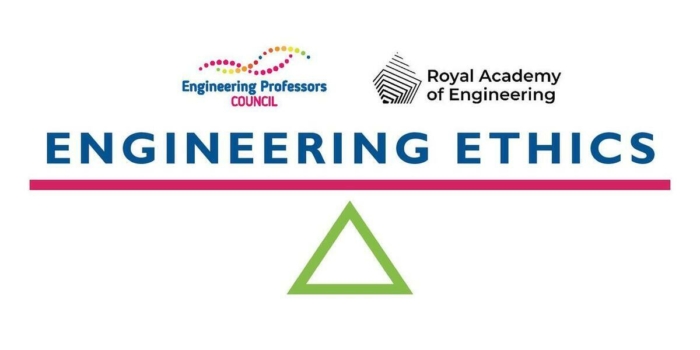
About the Engineering Ethics Toolkit
The EPC’s Engineering Ethics Toolkit is supported by the Royal Academy of Engineering. This... [Read More]

Engineering Ethics Toolkit - Tell us your experiences
Send us your blogs and testimonials! [Read More]

Using a constructive alignment tool to plan ethics teaching
Constructively align your learning outcomes with activities & assessments. [Read More]
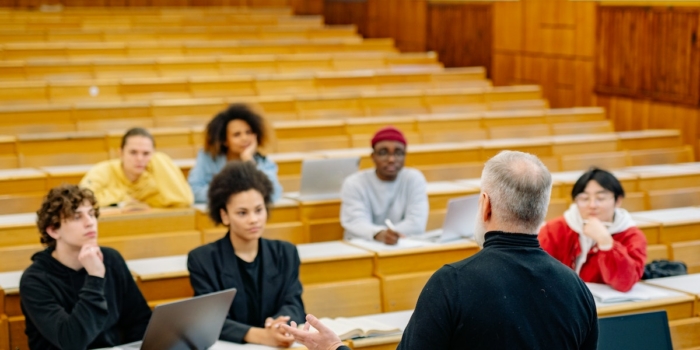
How to organise class sessions using Ethics case studies
Processes to help you integrate an Ethics case study in one of your engineering class sessions. [Read More]

Blog: Getting comfortable with being uncomfortable teaching ethics
We need to move past our discomfort in order to teach ethics in engineering. [Read More]

SEFI Conference 2023 - Engineering ethics workshop
Our workshop at the 2023 SEFI Conference. [Read More]

We want you! Become an Ethics Ambassador
Do you want to champion the teaching of ethics within engineering? [Read More]
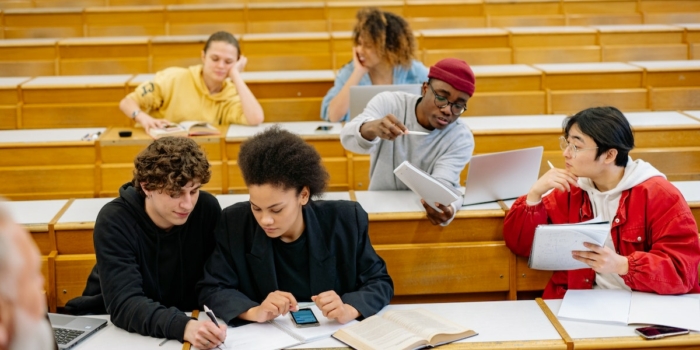
Engineering Ethics Toolkit - Educators' pack
A pack of resources to help you present and promote the Engineering Ethics Toolkit. [Read More]
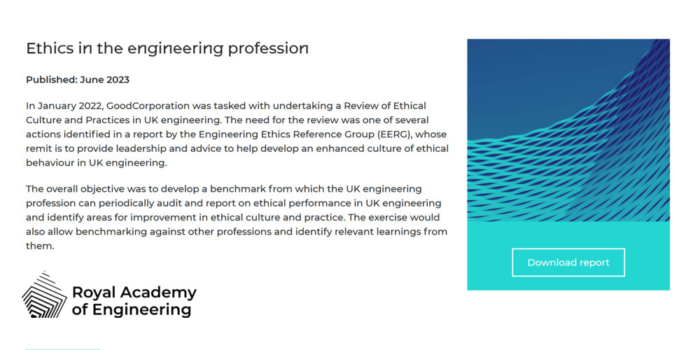
Report: Ethics in the engineering profession - Royal Academy of Engineering (2023)
Ethics in the engineering profession - Royal Academy of Engineering report. [Read More]
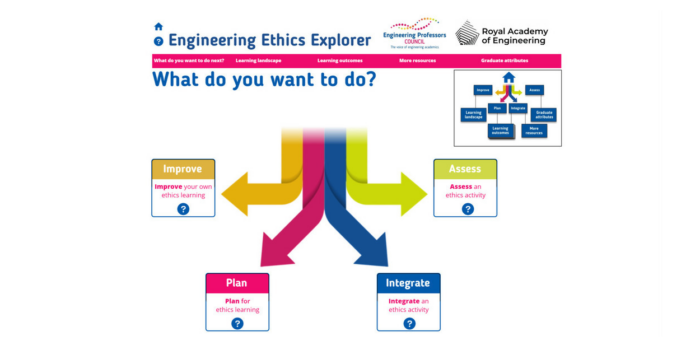
Media release: Engineering Professors’ Council launches new educational resource
An online resource that helps educators to build ethics directly into their engineering teaching. [Read More]

News: Introducing the Ethics Explorer
An interactive tool to help you navigate the landscape. [Read More]

Blog: Help! I’m teaching Engineering Ethics for the first time!
Dr. Jude Bramton of the University of Bristol discusses her first-hand experience of using the En... [Read More]
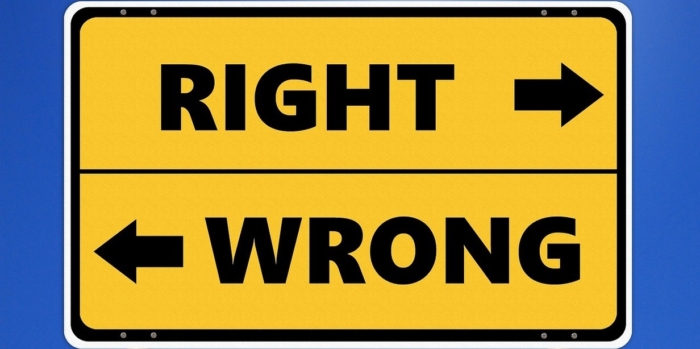
Blog: Letting students flex their ethical muscles
Dr Matthew Studley looks at using case studies from the Engineering Ethics Toolkit to engage stud... [Read More]

Engineering Ethics - Events
Events related to the Engineering Ethics Toolkit. [Read More]

Case study: Neuroethics of brain-computer interfaces
This case involves Aziza, a biomedical engineer working for Neuraltrix, a hypothetical company th... [Read More]

Case study: Implementing the use of homegrown mass timber for residential housing
An early-career consultant engineer working in the area of sustainable construction. [Read More]

A recipe for creating a case study in engineering ethics
This article sets forth a “recipe” based on recent educational scholarship that can be used to cr... [Read More]

Case study: Financially and politically motivated misinformation about STEM research
The case involves an engineering student whose personal choices may affect her future professiona... [Read More]

Case study: Developing a decarbonisation roadmap
This case involves an engineer who is one of the stakeholders invited by the president of Nigeria... [Read More]


Case study: Microplastics in cosmetics
This case study involves a young engineering student on an industrial placement year at a firm th... [Read More]

Case study: Balancing safety, costs, and the environment in the inspection of wind turbine blades
The case is based on a genuine challenge raised by a multinational energy company that operates a... [Read More]

Case study: Recycled materials and the circular economy
This case involves an engineer responsible for verifying the source of recycled construction mate... [Read More]

Case study: Protecting data in an auto parts production facility
This case study involves an engineer hired to develop and install an Industrial Internet of Thing... [Read More]

Case study: Balancing risk and benefits when working with offshore contractors
This case study puts students in the shoes of an engineer who is required to select a subcontract... [Read More]
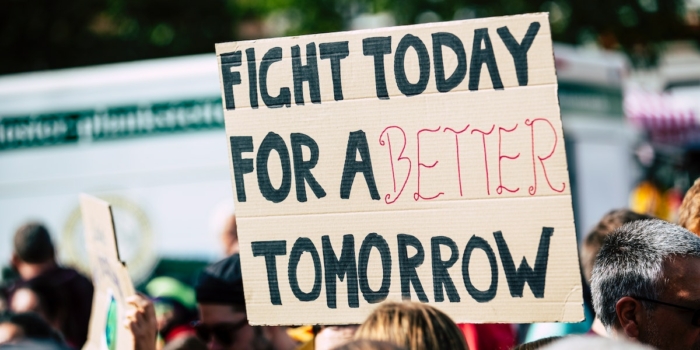
Case study: Engineers and public protest
This case study involves an engineer who has to weigh personal values against professional codes ... [Read More]

Case study: Feasibility of installing heat pumps at scale to reach net zero
The environmental impacts of heat pumps & the social and economic impacts on the end user. [Read More]

Case enhancement: Industrial pollution from an ageing pipeline and its impact on local communities
Prompts to facilitate discussion activities. [Read More]

Case enhancement: Glass safety in a heritage building conversion
This enhancement is for an activity found in the Dilemma Part two, Point 1 section of the case st... [Read More]
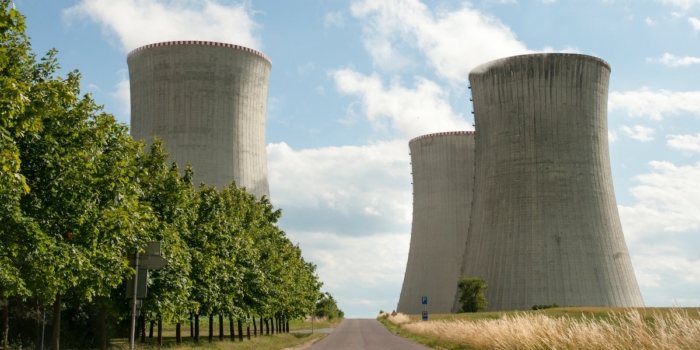
Case study: Debating the adoption of nuclear energy
An early career engineer is tasked with leading the development of plans for the construction of ... [Read More]

Case study: Aid vs trade
This case study requires a newly appointed engineer to make a decision about whether or not to se... [Read More]

Case enhancement: Developing an internet constellation
Anatomy of an internet satellite. [Read More]

Case enhancement: Power-to-food technologies
An ethical evaluation of the technology and its impacts. [Read More]

Case enhancement: Water wars: managing competing water rights
Role-play the council meeting, with students playing different characters representing different ... [Read More]

Embedding equity, diversity and inclusion into a professional engineer’s lifestyle
The three values of EDI are timeless and should be embedded into the way that engineering profess... [Read More]

Case enhancement: Facial recognition for access and monitoring
There are several points in this case - Facial Recognition for Access and Monitoring - during whi... [Read More]

Case enhancement: Business growth models in engineering industries within an economic system
This enhancement is for an activity found in the case study Business growth models in engineering... [Read More]

What is ethics?
Ethics can especially be seen through engineering innovations that mean life or death. [Read More]

Why integrate ethics in engineering?
Technology not only shapes society, but it is shaped by society too. Therefore, engineering ethic... [Read More]

Integrating a technical feasibility debate - a new approach to engaging students in ethics in engineering
We have developed a debate activity which appears to work very well, minimising the amount of ass... [Read More]

Universal and inclusive co-design of the built environment and the transportation systems
Every citizen must have the same equality of opportunities in using spaces because the existence ... [Read More]

How to integrate ethics into a module or course
Ethics can and should be embedded into most modules in a natural way, giving as much or as little... [Read More]

Case enhancement: Choosing to install a smart meter
This enhancement is for an activity found in the Dilemma Part two, Point 1 section of the case: “... [Read More]

Tackling tough topics in discussion
Discussing ethical issues can be a daunting prospect, whether one-to-one or with an entire classr... [Read More]

Case enhancement: Developing a school chatbot for student support services
This enhancement is for an activity found in point five of the Summary section of the case study ... [Read More]

Blog: Engineering inclusive outcomes is a question of ethics
Prof Dawn Bonfield explains how the decisions engineers make on a daily basis can have significan... [Read More]
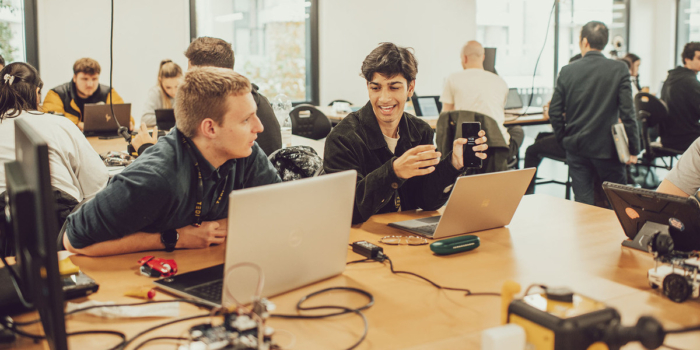
Blog: Engineering Ethics Toolkit case studies in action at TEDI-London
Prof Mike Bramhall reflects on how and why he incorporated the EPC's engineering ethics case stud... [Read More]

Contributions sought for the Engineering Ethics Toolkit
Contributions sought for the Engineering Ethics Toolkit [Read More]

Existing ethics case study libraries
The Engineering Ethics toolkit points to existing case study libraries. [Read More]
Case Study: Developing an internet constellation
This case is about an experienced engineer leading a team at a tech start-up. [Read More]
Case study: Water wars: managing competing water rights
This case involves a situation where environmental damage may be occurring despite the mechanism ... [Read More]

Case study: Solar panels in a desert oil field
This case requires an engineer with strong convictions about sustainable energy to make a decisio... [Read More]
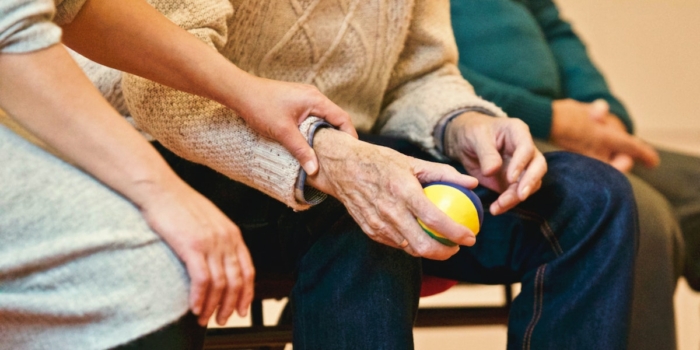
Case study: Smart homes for older people with disabilities
This case involves a software engineer who has discovered a potential data breach in a smart home... [Read More]

Blog: Engineering Ethics Advisory Group
The Engineering Ethics Toolkit is produced by the Engineering Professors’ Council with support fr... [Read More]
Case study: Power-to-food technologies
This case involves an engineer navigating multiple demands on a work project. The engineer must e... [Read More]
Case study: Industrial pollution from an ageing pipeline and its impact on local communities
This case requires an engineer to balance multiple competing factors including: economic pressure... [Read More]
Blog: Welcome to the Engineering Ethics Toolkit
An ambitious new initiative to ensure engineering education is a force for good. [Read More]
Case study: Glass safety in a heritage building conversion
This case concerns a construction engineer navigating multiple demands. [Read More]
Case study: Facial recognition for access and monitoring
An engineer is hired to manage the development and installation of a facial recognition project. [Read More]
Case Study: Developing a school chatbot for student support services
This case study involves the employees of a small software startup that is creating a customised ... [Read More]

Case study: Choosing a career in climate change geoengineering
This case involves a dilemma that most engineering students will have to face at least once in th... [Read More]
Case study: Business growth models in engineering industries within an economic system
This case involves the CEO of Hydrospector, a newly formed company that makes devices detecting w... [Read More]

Best practice in teaching engineering ethics through case studies
Recent scholarship on best practices in teaching engineering ethics through case studies. [Read More]

Pedagogical approaches to integrating ethics in engineering
It is essential to embed ethics into any project or learning outcome. [Read More]

Methods for assessing and evaluating ethics learning in engineering education
Educators may use these ethics learning aims and outcomes as guidance for developing assessments. [Read More]
Case study: Choosing to install a smart meter
This case is an example of ‘everyday ethics’. [Read More]

Guidance for ethical decision-making rooted in research and practice
What if a decision is required quickly? How do we ensure that we are likely to make the best one? [Read More]

Engineering Ethics
- Environmental Ethics
- Social Justice Issues
- Teaching Resources
Cases Available Online
- Cases on Engineering Practice Cases from the Online Ethics Center for Science and Engineering
- National Society of Professional Engineers Search the archive of case studies brought before the NSPE's Board of Ethical Review. Cases run from 1959 to 2006.
- Engineering Ethics Cases from Texas A & M University Though the design of this website is a bit dated, this is an extremely good collection of famous case studies maintained by Texas A&M University's Murdoch Center for Engineering.
- Engineering.com Ethics Cases A collection of eighteen famous case studies which include a time line of events, a detailed examination of the incident, and oftentimes a bibliography for further investigation.
- Engineering Ethics: Concepts and Cases Cases from the first edition of the book, "Engineering Ethics: Concepts and Cases by Charles Harris. Listed by name, engineering specialty, and a taxonomy of cases by subject dealt with.
- Engineering Disasters and Learning from Failure A collection of cases on famous engineering failures maintained by the Materials Science and Engineering Department at the University of New York, Stony Brook.
- Ethics Education Library - Engineering Cases A collection of over 500 cases on various aspects engineering ethics. Searchable by topic and keyword.
Books Containing Cases
- Engineering Ethics: Concepts, Viewpoints, Cases and Codes by Jimmy Smith, Patricia Harper, and Richard Burgess Call Number: CSEP.TA157.E54x2008 Along with a number of seminal readings on engineering ethics, this book includes a large collection of codes of ethics and case studies.
Engineering Ethics Films
- Incident at Morales Call Number: DVD.CSEP.TA157.I53x2003 Incident at Morales involves a variety of ethical issues faced by a company that wants to quickly build a plant in order to develop a new chemical product to gain a competitive edge over the competition
- Gilbane Gold by National Institute for Engineering Ethics Call Number: Available at the Ethics Center Library Publication Date: http://www.onlineethics.org/Resources/Cases/22240.aspx Available at the CSEP Library, this video is the fictional story of a chemical company The city of Gilbane has implemented a plan where the sewage of the city is processed and sold as fertilizer to local farmers, a product locally known as Gilbane Gold. The fertilizer project creates a sizable revenue for the city, who has also sought to make itself attractive to business through numerous tax incentives. Not long ago, the city has put in place stringent regulations on the amount of heavy metals manufacturing plants located in Gilbane discharge into the city's sewage. Z Corp, a company in Gilbane, has been releasing a higher level of heavy metals into the city's sewage than allowed. As a new employee, should the engineer David Jackson tell the city about this fact? Below URL is a link to a summary of the film, and discussion questions. The link goes to a teaching guide that describes the film in more detail.
- << Previous: Home
- Next: Environmental Ethics >>
- Last Updated: Jun 17, 2024 11:19 AM
- URL: https://guides.library.iit.edu/engineeringethics
Engineering Ethics: Real World Case Studies
Author: Starrett, Steven K.; Lara, Amy L.; Bertha, Carlos
Date published
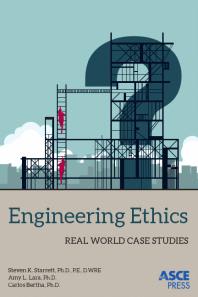
Starrett, Steven K.; Lara, Amy L.; Bertha, Carlos
Free to members
First published
Provides in-depth analysis with extended discussions and study questions of case studies that are based on real work situations., additional information, related resources & events, whistleblowing.
Provides an overview of whistleblowing and how to raise a concern.
Guidance on ethics
All members of the Institution of Structural Engineers should subscribe to the Statement of Ethical Principles.
In conversation with Gold Medallists: inspiring action
IStructE President Tanya de Hoog talks with celebrated engineers Paul Fast and Chris Wise about how they embed people and planet at the heart of their work.
Item Added to basket
IEEE Account
- Change Username/Password
- Update Address
Purchase Details
- Payment Options
- Order History
- View Purchased Documents
Profile Information
- Communications Preferences
- Profession and Education
- Technical Interests
- US & Canada: +1 800 678 4333
- Worldwide: +1 732 981 0060
- Contact & Support
- About IEEE Xplore
- Accessibility
- Terms of Use
- Nondiscrimination Policy
- Privacy & Opting Out of Cookies
A not-for-profit organization, IEEE is the world's largest technical professional organization dedicated to advancing technology for the benefit of humanity. © Copyright 2024 IEEE - All rights reserved. Use of this web site signifies your agreement to the terms and conditions.

- Member Benefits
- Types of Membership
- Renew Membership
- Diversity, Equity, and Inclusion
- Get Involved
- NSPE Communities
- Interest Groups
- State Societies
- What Is a PE
- Why Get Licensed
- How to Get Licensed
- Maintaining a License
- Why PEs Matter
- NSPE Protects Your PE License
- Licensing Boards
- Licensing Resources
- Professional Engineers Day
- History of the Code of Ethics for Engineers
- Engineers' Creed
- Code of Ethics (French)
- Code of Ethics (German)
- Code of Ethics (Japanese)
- Code of Ethics (Spanish)
- Board of Ethical Review
- Board of Ethical Review Cases
- Education and Publications
Engineering Ethics Videos
- Ethics Exam
- Milton F. Lunch Ethics Contest
- Leadership Institute for Women PEs
- 2024 Professional Engineers Conference
- PE/FE Exam Preparation
- Emerging Leaders Program
- NSPE Education Foundation
- EJCDC Contract Documents
- Professional Liability
- NSPE Advocacy Center
- Sustainability and Resilience
- Action on Issues
- Latest News
- Reports on State PE Laws and Rules
- Advocacy Tools
- State Watch
- PE Legislators
- Professional Policies and Position Statements
- NSPE Legal Fund
- Protect the PE Fund
- NSPE Life Member Contribution
- Digital PE Magazine
- PE Magazine
- Daily Designs Archives
- NSPE Update
- Advertising

" Gilbane Gold: A Case Study in Engineering Ethics " - 1989 (23 min.) National Institute for Engineering Ethics Texas Tech University , Box 41023 , Lubbock , TX 79409-1023 Phone: 806-742-3525 (3521) / Fax: 806-742-0444 Gilbane Gold shows the dilemma of an engineer caught between doing what he feels is right, and remaining loyal to the company. When the engineer discovers that his company is polluting the environment despite compliance with regulations, he must convince his superiors that their deceptive water quality reporting policy isn't ethical. Eventually, he is forced to risk his career by making the deception public. This video also shows factors that motivate companies as they balance tradeoffs between safety and profits, and how cities make tradeoffs between tax revenues from companies and the strictness of pollution standards applied to those companies. This video is well acted and written, making it easy for students to identify with the engineer's crisis. A discussion guide is included.
" Testing Water...And Ethics " 1998 (28 min.) Institute for Professional Practice 13 Lanning Road Verona, NJ 07044-2511 Phone: 1-888-477-2723 / Fax: 973-857-5952 Helping engineers to think in terms of design problems, Testing Water and Ethics , shows that some ethical issues don't have completely satisfying solutions. This video examines the case of a young engineer who must decide whether or not to report test information in a complete manner, despite the fact that not all of the information was required. After initially seeing the problem as a clear case of responsibility for public safety, the engineer later finds that there are equally important ethical responsibilities to consider. The engineer adopts a design approach to this complex problem, but finds in the end that even a good engineering solution may necessitate tradeoffs that are somewhat unsatisfying. This video effectively encourages viewers to use their engineering design skills, and the applicable codes of ethics when dealing with ethical issues. A workbook is included.
" Incident at Morales " (NIEE) 2003 (36 min.) National Institute for Engineering Ethics Texas Tech University , Box 41023 , Lubbock , TX 79409-1023 Phone: 806-742-3525 (3521) / Fax: 806-742-0444 / www.nspe.org/ShopNSPE www.niee.org Incident at Morales involves a variety of ethical issues faced by a company that wants to quickly build a plant in order to develop a new chemical product to gain a competitive edge over the competition. After the plant goes into full operation, an unfortunate accident occurs, resulting in serious consequences. " Ethicana " - 2009 (42 min.) American Society of Civil Engineers https://secure.asce.org/ASCEWebSite/BOOKSTORE/BookDescription.aspx?ProdId=15892 Ethicana is the centerpiece of the Global Anti-Corruption Education and Training Initiative and is a dramatic film that's a powerful exercise in how to not only keep from falling prey to corruption in the global construction and engineering industries, but how to have the ethical courage to expose it. This drama portrays how to avoid falling prey to corruption, as well as how to have the moral courage to expose it. The film is a drama, but it does reflect an unfortunate reality. The program calls on participants to promote greater ethical decision-making in those industries. " Henry's Daughter " 2010 (30 min.) National Institute for Engineering Ethics Texas Tech University , Box 41023 , Lubbock , TX 79409-1023 Phone: 806-742-3525 (3521) / Fax: 806-742-0444 / www.nspe.org/ShopNSPE Henry and his two daughters are involved in a joint Academia/Industry/DOT (Department of Transportation) smart highway design project called SANSHANDS. The goal of the project is to develop specifications for smart highways and car control systems—so we won't drive anymore. The eldest daughter, Laura, works at the DOT. She will be the technical project manager on the SANSHANDS project. She is responsible for compiling and recommending the technical specifications for the computer control system that will be used to guide R&D. The youngest daughter, Julie is an intern with OUTOCAR, a local start-up company recently founded by engineers from the state university in partnership with University's Business Incubator. As the project evolves both sisters begin to see the potential for the corrupting influence that industry money can have on both government and academia. It falls to Laura and her team to do the cost benefit analysis between the GUIDEME and OUTOCAR systems. There are pressures within the DOT and other state departments indicating that GUIDEME is the preferred choice. OUTOCAR raises allegations that there was ethical misconduct and possible criminal violations during the project. Henry, Laura and Julie are all called to testify at a hearing conducted by the state senate ethics commission.
Information
- Author Services
Initiatives
You are accessing a machine-readable page. In order to be human-readable, please install an RSS reader.
All articles published by MDPI are made immediately available worldwide under an open access license. No special permission is required to reuse all or part of the article published by MDPI, including figures and tables. For articles published under an open access Creative Common CC BY license, any part of the article may be reused without permission provided that the original article is clearly cited. For more information, please refer to https://www.mdpi.com/openaccess .
Feature papers represent the most advanced research with significant potential for high impact in the field. A Feature Paper should be a substantial original Article that involves several techniques or approaches, provides an outlook for future research directions and describes possible research applications.
Feature papers are submitted upon individual invitation or recommendation by the scientific editors and must receive positive feedback from the reviewers.
Editor’s Choice articles are based on recommendations by the scientific editors of MDPI journals from around the world. Editors select a small number of articles recently published in the journal that they believe will be particularly interesting to readers, or important in the respective research area. The aim is to provide a snapshot of some of the most exciting work published in the various research areas of the journal.
Original Submission Date Received: .
- Active Journals
- Find a Journal
- Proceedings Series
- For Authors
- For Reviewers
- For Editors
- For Librarians
- For Publishers
- For Societies
- For Conference Organizers
- Open Access Policy
- Institutional Open Access Program
- Special Issues Guidelines
- Editorial Process
- Research and Publication Ethics
- Article Processing Charges
- Testimonials
- Preprints.org
- SciProfiles
- Encyclopedia

Article Menu

- Subscribe SciFeed
- Google Scholar
- on Google Scholar
- Table of Contents
Find support for a specific problem in the support section of our website.
Please let us know what you think of our products and services.
Visit our dedicated information section to learn more about MDPI.
JSmol Viewer
“curious is as curious does”: fostering question-asking in a sino-foreign engineering school—a case study.

1. Introduction
2. literature review, 2.1. curiosity, 2.2. question-asking, curiosity, and stem, 2.3. question-asking: culture and gender, 2.4. research questions.
- What are students’ perceptions about question-asking and curiosity in research following a project-based learning intervention in a communications course, and what role does gender play in this process?
3. Materials and Methods
3.1. participants and context, 3.2. procedure and analysis, 4.1. curiosity and question-asking.
“During the whole process, we learned a lot about the history of the Nobel prize, the life and research experiences of each prize winner. The solid knowledge foundation and a strong sense of curiosity motivated this successful research, which also inspire me to work harder and be more curious to find some questions rises from life (author’s emphasis). We got an insight of the timeline of its discovery and were excited by the indefatigable spirit of exploration” .
“During this project, finding sparks is a very interesting entry point for me to understanding better. The Nobel Prize is an ambitious project, but no matter how ambitious the study was also started by an original spark, a small idea (author’s emphasis). I think it’s very inspiring: grab some sparks and keep working on them, never give up, maybe you can also be the next Nobel winner” .
“[The discovery of graphene by isolating it from chemical waste] “Actually it was totally strange behavior for a scientist since chemical waste is always useless and dangerous. But Geim acted from curiosity, and with this strange behavior he created a legend. Probably, I should put more curiosity into everything around me.” Geim impressed another student as well, “…I have a lot of new understanding of science from Andre Geim. He won both the Ig Noble prize awarded to research that makes people laugh and the 2010 Nobel Prize. I think the source of success is curiosity. He always has strange ideas which can achieve very amazing results…. So, I think in my study I need to keep curious all the time. The strange ideas are not bad. Sometimes they may be the source to success” .
“I also saw that winning the Nobel Prize is actually a consequent result of his [Dr. Honjo] extraordinary traits of perseverance and curiosity. The project acts as a powerful tool to show us how these qualities matter in our life.” Also, “From Dr. Feynman’s life I know that curiosity is not only important, but also makes life interesting and that being proficient and focused on one’s own profession is almost the best gift to life” .
“I also learned that scientists who won the Nobel Prize are not always excellent and untouchable. They would be distressed about finishing their undergraduate studies. But he [Yoshinori] also had one of the qualities that all successful scientists almost invariably have, which is a constant curiosity and thirst for knowledge. All these will affect my future study” .
4.2. Gender and Change in Attitude towards Question-Asking
“I learned [from Frances Arnold] good scientific spirit. She is a feminist and showed me that women can be powerful too” .
“It was surprising to see how few female Nobel Prize winners there were, which made me think more about gender inequality in science” .
“We marveled at her [Frances Arnold] experience and were impressed by her perseverance. At the same time, all the members of group saw ourselves as new age women. We are convinced that setbacks cannot stop is, that the future is created by us, that the core of scientific discovery lies in discovering “no man’s land”, and we must dare to discover and innovate!”
“In the process of preparing the speech, we studied the whole procedure of the discovery, and we also had a deeper understanding of the Nobel prize itself. I highly appreciate the laureates’ love for science, meticulous attitude towards research projects, and perseverance in the face of difficulties. Their deeds inspired me to study and work harder in the future, trying to change the situation that there are far fewer female winners than male winners (author’s emphasis)” .
“I am really shy to present my ideas, but this project helped me become more confident in asking questions and participating” . (Female student)
“Curiosity drives us to find the facts, and this project reinforced my ability to ask questions and engage with the material” . (Male)
“I feel more confident now, but I still find it challenging to ask questions in front of the whole class” . (Female)
“Asking questions has always been something I enjoy, and this project made me even more confident in doing so” . (Male)
4.3. Learning from Researchers’ Biographies: Failure and Perseverance
“But in this project, through step by step understanding of Nobel Prize winners. I also slowly discovered that these legendary geniuses are actually just ordinary people like us, who make mistakes and fail. It’s just that they work harder than us, have a solid academic foundation, and have more perseverance” .
“During the whole process, we learned a lot about the history of Nobel prize, the life and research experiences of each prize winner. The solid knowledge foundation and a strong sense of curiosity motivated this successful research, which also inspire me to work harder and be more curious to find some questions rises from life. We got an insight of the timeline of its discovery and were excited by the indefatigable spirit of exploration” .
“By learning about the biographies of the three winners, I found that they have several things in common: 1. they all have their own teams; 2. none of the research processes are smooth (author’s emphasis); 3. the research results among the three complement each other” .
5. Discussion
6. limitations and conclusions, author contributions, institutional review board statement, informed consent statement, data availability statement, conflicts of interest.
| Survey Question | Question Scale | Number of Students | Percentage of Students |
|---|---|---|---|
| Was your Nobel Prize presentation successful? | 1 = No | 0 | 0.0% |
| 2 = Maybe | 41 | 43.2% | |
| 3 = Yes | 54 | 56.8% | |
| Were you satisfied with the presentation produced by your group? | 1 = No | 1 | 1.1% |
| 2 = Maybe | 18 | 18.9% | |
| 3 = Yes | 76 | 80.0% | |
| Overall, was the Nobel prize project an enjoyable learning experience? | 1 = Strongly disagree | 11 | 11.6% |
| 2 = Disagree | 3 | 3.2% | |
| 3 = Neutral | 20 | 21.1% | |
| 4 = Agree | 37 | 38.9% | |
| 5 = Strongly agree | 24 | 25.3% | |
| What skills did you improve the most on this project? [Communication] | 1 = Nothing | 1 | 1.1% |
| 2 = A little bit | 6 | 6.3% | |
| 3 = Somewhat | 24 | 25.3% | |
| 4 = Much | 28 | 29.5% | |
| 5 = Very much | 36 | 37.9% | |
| What skills did you improve the most on this project? [Question-asking] | 1 = Nothing | 2 | 2.1% |
| 2 = A little bit | 13 | 13.7% | |
| 3 = Somewhat | 25 | 26.3% | |
| 4 = Much | 29 | 30.5% | |
| 5 = Very much | 26 | 27.4% | |
| Please give your opinion on [I have gained insight into how scientific research is conducted as a result of this project.] | 1 = Nothing | 1 | 1.1% |
| 2 = A little bit | 6 | 6.3% | |
| 3 = Somewhat | 23 | 24.2% | |
| 4 = Much | 35 | 36.8% | |
| Please give your opinion on [I was encouraged to research topics outside of the classroom.] | 1 = Nothing | 1 | 1.1% |
| 2 = A little bit | 6 | 6.3% | |
| 3 = Somewhat | 19 | 20.0% | |
| 4 = Much | 34 | 35.8% | |
| 5 = Very much | 35 | 36.8% |
| Variable 1 | Variable 2 | Correlation Coefficient | Significance Level (p-Value) |
|---|---|---|---|
| Curiosity-driven approach | Enjoyment of group work | 0.45 | p < 0.01 |
| Improvement in question-asking skills | 0.43 | p < 0.05 | |
| Satisfaction with the Nobel Prize project | Improvement in teamwork skills | 0.55 | p < 0.01 |
| Nervousness during presentations | Gender (Female) | 0.50 | p < 0.01 |
| Group work experience | Success in Nobel Prize presentation | 0.48 | p < 0.01 |
| Satisfaction with group presentation | Clear division of labor | 0.52 | p < 0.01 |
| Enjoyment of giving oral presentations | Improvement in communication skills | 0.40 | p < 0.05 |
| Time management issues | Dissatisfaction with group project outcome | −0.47 | p < 0.05 |
| Language barrier | Nervousness during presentations | 0.42 | p < 0.05 |
| Problem/Issue | Male (%) | Female (%) |
|---|---|---|
| Group Members Not Participating | 35% | 40% |
| Nervousness During Presentation | 30% | 50% |
| Difficulty Reaching Consensus | 20% | 15% |
| Time Management Issues | 10% | 20% |
| Language Barrier | 5% | 5% |
- Ciechanover, A.; Shalev, E. Special Issue: Introductory Note (Adv. Funct. Mater. 18/2020). Adv. Funct. Mater. 2020 , 30 , 2070112. [ Google Scholar ] [ CrossRef ]
- Eizenberg, M. Research at GTIIT: The Birth of Guangdong Technion–Israel Institute of Technology: Innovative and Sophisticated Education and Research in China (Adv. Funct. Mater. 18/2020). Adv. Funct. Mater. 2020 , 30 , 2070117. [ Google Scholar ] [ CrossRef ]
- Li, Y.; Emin, M.; Zhou, Q.; Zhang, J.; Hu, W. The relationship between epistemic curiosity and creativity: Research status and educational implications. Future Educ. Res. 2023 , 1 , 115–128. [ Google Scholar ] [ CrossRef ]
- Simonton, D.K. Foresight, insight, oversight, and hindsight in scientific discovery: How sighted were Galileo’s telescopic sightings? Psychol. Aesthet. Creat. Arts 2012 , 6 , 243–254. [ Google Scholar ] [ CrossRef ]
- Eliyahu, E.B.; Assaraf, O.B.Z.; Lederman, J.S.; Eliyahu, E.B.; Assaraf, O.B.Z.; Lederman, J.S. Do Not Just Do Science Inquiry, Understand It! The Views of Scientific Inquiry of Israeli Middle School Students Enrolled in a Scientific Reserve Course. Res. Sci. Educ. 2021 , 51 , 1073–1091. [ Google Scholar ] [ CrossRef ]
- Jirout, J.J.; Zumbrunn, S.; Evans, N.S.; Vitiello, V.E. Development and Testing of the Curiosity in Classrooms Framework and Coding Protocol. Front. Psychol. 2022 , 13 , 875161. [ Google Scholar ] [ CrossRef ]
- Grossnickle, E.M. Disentangling Curiosity: Dimensionality, Definitions, and Distinctions from Interest in Educational Contexts. Educ. Psychol. Rev. 2016 , 28 , 23–60. [ Google Scholar ] [ CrossRef ]
- Ryan, R.M. The Oxford Handbook of Human Motivation ; Oxford University Press: Oxford, UK, 2012. [ Google Scholar ]
- Hwang, A.; Ang, S.; Marie Francesco, A. The Silent Chinese: The Influence of Face and Kiasuism on Student Feedback-Seeking Behaviors. J. Manag. Educ. 2002 , 26 , 70–98. [ Google Scholar ] [ CrossRef ]
- Rao, Z. Chinese students’ perceptions of communicative and non-communicative activities in EFL classroom. System 2002 , 30 , 85–105. [ Google Scholar ] [ CrossRef ]
- Ma, Y.; Wang, T.; Wang, J.; La, A.; Chen, R.; Yan, X. A comparative study on scientific inquiry activities of Chinese science textbooks in high schools. Res. Sci. Educ. 2021 , 51 , 407–427. [ Google Scholar ] [ CrossRef ]
- Teng, W.; Ma, C.; Pahlevansharif, S.; Turner, J.J. Graduate readiness for the employment market of the 4th industrial revolution The development of soft employability skills. Educ. Train. 2019 , 61 , 590–604. [ Google Scholar ] [ CrossRef ]
- Zhang, X. Exploring the Interaction of EFL Student Writers with SFL-based Teaching and Teacher-written Feedback. Rev. Signos 2021 , 54 , 465–486. [ Google Scholar ] [ CrossRef ]
- Feldman, B. The Nobel Prize: A History of Genius, Controversy, and Prestige ; Arcade Publishing: New York, NY, USA, 2000. [ Google Scholar ]
- Zheng, X.; Zhou, W.; Ni, C.; Wang, C. The influencing mechanism of research training on Chinese STEM Ph.D. students’ career interests. Asia Pac. Educ. Rev. 2022 , 1–17. [ Google Scholar ] [ CrossRef ]
- Dickman, N.E. The Challenge of Asking Engaging Questions. Curr. Teach. Learn. 2009 , 2 , 3–16. [ Google Scholar ]
- Niva, A.; Markkula, J.; Annanperä, E. Junior Software Engineers’ International Communication and Collaboration Competences. IEEE Access 2023 , 11 , 139039–139068. [ Google Scholar ] [ CrossRef ]
- Smekalova, L.; Chaloupkova, P.; Nemejc, K.; Ny, V. Satisfaction with acquired transferable competences among university students in Cambodia. Asia Pac. Educ. Rev. 2024 , 25 , 19–29. [ Google Scholar ] [ CrossRef ]
- Litman, J. Curiosity and the pleasures of learning: Wanting and liking new information. Cogn. Emot. 2005 , 19 , 793–814. [ Google Scholar ] [ CrossRef ]
- Berlyne, D.E. A theory of human curiosity. Br. J. Psychol. 1954 , 45 , 180–191. [ Google Scholar ] [ CrossRef ]
- Kashdan, T.B.; Rose, P.; Fincham, F.D. Curiosity and Exploration: Facilitating Positive Subjective Experiences and Personal Growth Opportunities. J. Pers. Assess. 2004 , 82 , 291–305. [ Google Scholar ] [ CrossRef ]
- Bergmark, U. Teachers’ professional learning when building a research-based education: Context-specific, collaborative and teacher-driven professional development. Prof. Dev. Educ. 2023 , 49 , 210–224. [ Google Scholar ] [ CrossRef ]
- Chin, C.; Kayalvizhi, G. Posing Problems for Open Investigations: What Questions Do Pupils Ask? Res. Sci. Technol. Educ. 2002 , 20 , 269–287. [ Google Scholar ] [ CrossRef ]
- Dori, Y.J.; Herscovitz, O. Question-Posing Capability as an Alternative Evaluation Method: Analysis of an Environmental Case Study. J. Res. Sci. Teach. 1999 , 36 , 411–430. [ Google Scholar ] [ CrossRef ]
- Eshach, H.; Dor-Ziderman, Y.; Yefroimsky, Y. Question Asking in the Science Classroom: Teacher Attitudes and Practices. J. Sci. Educ. Technol. 2014 , 23 , 67–81. [ Google Scholar ] [ CrossRef ]
- Watts, M.; Gould, G.; Alsop, S. Questions of Understanding: Categorising Pupils’ Questions in Science. Sch. Sci. Rev. 1997 , 79 , 57–63. [ Google Scholar ]
- Brill, G.; Yarden, A. Learning Biology through Research Papers: A Stimulus for Question-Asking by High-School Students. Cell Biol. Educ. 2003 , 2 , 266–274. [ Google Scholar ] [ CrossRef ]
- Orr, H.A. An Evolutionary Dead End? Science 1999 , 285 , 343–344. [ Google Scholar ] [ CrossRef ]
- Chin, C. Students’ questions: Fostering a culture of inquisitiveness in science classrooms. Sch. Sci. Rev. 2004 , 314 , 107–112. [ Google Scholar ]
- Chin, C.; Osborne, J. Students’ questions: A potential resource for teaching and learning science. Stud. Sci. Educ. 2008 , 44 , 1–39. [ Google Scholar ] [ CrossRef ]
- Zoller, U. From Algorithmic Science Teaching to “Know” to Research-Based Transformative Inter-Transdisciplinary Learning to “Think”: Problem Solving in the STES/STEM and Sustainability Contexts. Contrib. Sci. Educ. Res. 2016 , 2 , 153–168. [ Google Scholar ] [ CrossRef ]
- Soysal, Y.; Soysal, S. The Art of Asking Good Questions in the Classroom: A Phenomenographic Study of Teacher Educators’ Recommendations. ECNU Rev. Educ. 2023 . [ Google Scholar ] [ CrossRef ]
- Yerdelen-Damar, S.; Eryılmaz, A.; Yerdelen-Damar, S.; Eryılmaz, A. Questions About Physics: The Case of a Turkish “Ask a Scientist” Website. Res Sci Educ 2010 , 40 , 223–238. [ Google Scholar ] [ CrossRef ]
- Downing, V.R.; Cooper, K.M.; Cala, J.M.; Gin, L.E.; Brownell, S.E. Fear of Negative Evaluation and Student Anxiety in Community College Active-Learning Science Courses. CBE—Life Sci. Educ. 2020 , 19 . [ Google Scholar ] [ CrossRef ]
- Woodward, C. Raising and answering questions in primary science: Some considerations. Eval. Res. Educ. 1992 , 6 , 145–153. [ Google Scholar ] [ CrossRef ]
- Suwono, H.; Dewi, E.K. Problem-based learning blended with online interaction to improve motivation, scientific communication and higher order thinking skills of high school students. AIP Conf. Proc. 2019 , 2081 , 030003. [ Google Scholar ] [ CrossRef ]
- King, A. Guiding Knowledge Construction in the Classroom: Effects of Teaching Children How to Question and How to Explain. Am. Educ. Res. J. 2016 , 31 , 338–368. [ Google Scholar ] [ CrossRef ]
- Chin, C.; Chia, L.-G. Problem-based learning: Using students’ questions to drive knowledge construction. Sci. Educ. 2004 , 88 , 707–727. [ Google Scholar ] [ CrossRef ]
- Dogan, F.; Yucel-Toy, B. Students’ question asking process: A model based on the perceptions of elementary school students and teachers. Asia Pac. J. Educ. 2021 , 42 , 786–801. [ Google Scholar ] [ CrossRef ]
- Watts, M.; Pedrosa De Jesus, H. The Cause and Affect of Asking Questions: Reflective Case Studies from Undergraduate Sciences. Can. J. Sci. Math. Technol. Educ. 2005 , 5 , 437–452. [ Google Scholar ] [ CrossRef ]
- Bosman, L. From Doing to Thinking: Developing the Entrepreneurial Mindset through Scaffold Assignments and Self-Regulated Learning Reflection. Open Educ. Stud. 2019 , 1 , 106–121. [ Google Scholar ] [ CrossRef ]
- DeWaters, J.; Kotla, B. Using an open-ended socio-technical design challenge for entrepreneurship education in a first-year engineering course. Front. Educ. 2023 , 8 , 1198161. [ Google Scholar ] [ CrossRef ]
- Richter, T.; Kjellgren, B. Engineers of the future: Student perspectives on integrating global competence in their education. Eur. J. Eng. Educ. 2024 , 49 , 474–491. [ Google Scholar ] [ CrossRef ]
- Chin, C.; Brown, D.E.; Bruce, B. Student-generated questions: A meaningful aspect of learning in science. Int. J. Sci. Educ. 2002 , 24 , 521–549. [ Google Scholar ] [ CrossRef ]
- Biddulph, F.; Symington, D.; Osborne, R. The Place of Children’s Questions in Primary Science Education. Res. Sci. Technol. Educ. 1986 , 4 , 77–88. [ Google Scholar ] [ CrossRef ]
- Dkeidek, I.; Mamlok-Naaman, R.; Hofstein, A. Effect of culture on high-school students’ question-asking ability resulting from an inquiry-oriented chemistry laboratory. Int. J. Sci. Math. Educ. 2010 , 9 , 1305–1331. [ Google Scholar ] [ CrossRef ]
- Huang, X.; Lederman, N.G.; Cai, C. Improving Chinese junior high school students’ ability to ask critical questions. J. Res. Sci. Teach. 2017 , 54 , 963–987. [ Google Scholar ] [ CrossRef ]
- Jia, L.; Li, X. Why Don’t You Speak Up?: East Asian Students’ Participation Patterns in American and Chinese ESL Classrooms. Intercult. Commun. Stud. 2006 , 15 , 192–206. [ Google Scholar ]
- Jackson, J. Reticence in second language case discussions: Anxiety and aspirations. System 2002 , 30 , 65–84. [ Google Scholar ] [ CrossRef ]
- Zhu, H.; O’Sullivan, H. Shhhh! Chinese students are studying quietly in the UK. Innov. Educ. Teach. Int. 2022 , 59 , 275–284. [ Google Scholar ] [ CrossRef ]
- Girardelli, D.; Patel, V.K. The Theory of Planned Behavior and Chinese ESL Students’ In-class Participation. J. Lang. Teach. Res. 2016 , 7 , 31–41. [ Google Scholar ] [ CrossRef ]
- Peng, J.E. Towards an ecological understanding of willingness to communicate in EFL classrooms in China. System 2012 , 40 , 203–213. [ Google Scholar ] [ CrossRef ]
- Tang, X.; Wang, Y.; Wong, D. Learning to be silent: Examining Chinese elementary students’ stories about why they do not speak in class. Lang. Cult. Curric. 2020 , 33 , 384–401. [ Google Scholar ] [ CrossRef ]
- Ma, J. Developing Joint R&D Institutes between Chinese Universities and International Enterprises in China’s Innovation System: A Case at Tsinghua University. Sustainability 2019 , 11 , 7133. [ Google Scholar ] [ CrossRef ]
- Senor, D.; Singer, S. Start-Up Nation: The Story of Israel’s Economic Miracle ; McClelland & Stewart: Toronto, ON, Canada, 2011. [ Google Scholar ]
- Hinsley, A.; Sutherland, W.J.; Johnston, A. Men ask more questions than women at a scientific conference. PLoS ONE 2017 , 12 , e0185534. [ Google Scholar ] [ CrossRef ]
- Moazzam, S.; Onstad, L.; O’Leary, H.; Marshall, A.; Osunkwo, I.; Du, E.; Dunn, T.; Dunlap, J.; Reed, B.; Luger, S.; et al. Gender differences in question-asking at the 2019 American Society of Hematology Annual Meeting. Blood Adv. 2020 , 4 , 5473–5479. [ Google Scholar ] [ CrossRef ]
- Cheng, L.T.; Smith, T.J.; Hong, Z.R.; Lin, H.S. Gender and STEM background as predictors of college students’ competencies in forming research questions and designing experiments in inquiry activities. Int. J. Sci. Educ. 2021 , 43 , 2866–2883. [ Google Scholar ] [ CrossRef ]
- Savery, J.R. Overview of problem-based learning: Definitions and distinctions. In Essential Readings in Problem-Based Learning ; Walker, A.E., Leary, H., Hmelo-Silver, C.E., Ertmer, P.A., Eds.; Purdue University: West Lafayette, IN, USA, 2015; Volume 9, pp. 5–15. [ Google Scholar ]
- Deep, S.; Ahmed, A.; Suleman, N.; Abbas, M.Z.; Nazar, U.; Shaheen, H.; Razzaq, A. The Problem-Based Learning Approach towards Developing Soft Skills: A Systematic Review. Qual. Rep. 2020 , 25 , 4029–4054. [ Google Scholar ] [ CrossRef ]
- Gargac, J.A. Building Entrepreneurial Mindset: Motivating Curiosity, Connections, and Creating Value in an Assistive-Device Design Project. J. Biomech. Eng. 2024 , 146 , 054501. [ Google Scholar ] [ CrossRef ]
- Rakedzon, T.; Van Horne, C. Don’t stop questioning: Developing curiosity in engineering students in China though project based learning. In Proceedings of the ICERI2021 Proceedings, Yogyakarta, Indonesia, 10–11 November 2021; pp. 3447–3452. [ Google Scholar ] [ CrossRef ]
- Schutte, N.S.; Malouff, J.M. Increasing curiosity through autonomy of choice. Motiv. Emot. 2019 , 43 , 563–570. [ Google Scholar ] [ CrossRef ]
- Gülbahar, Y.; Tinmaz, H. Implementing Project-Based Learning And E-Portfolio Assessment In an Undergraduate Course. J. Res. Technol. Educ. 2014 , 38 , 309–327. [ Google Scholar ] [ CrossRef ]
- Movahedzadeh, F.; Patwell, R.; Rieker, J.E.; Gonzalez, T. Project-Based Learning to Promote Effective Learning in Biotechnology Courses. Educ. Res. Int. 2012 , 2012 , 536024. [ Google Scholar ] [ CrossRef ]
- Wurdinger, S.; Qureshi, M. Enhancing College Students’ Life Skills through Project Based Learning. Innov. High. Educ. 2014 , 40 , 279–286. [ Google Scholar ] [ CrossRef ]
- Coffelt, T.A.; Baker, M.J.; Corey, R.C. Business Communication Practices from Employers’ Perspectives. Bus. Prof. Commun. Q. 2016 , 79 , 300–316. [ Google Scholar ] [ CrossRef ]
- Braun, V.; Clarke, V. Using thematic analysis in psychology. Qual. Res. Psychol. 2006 , 3 , 77–101. [ Google Scholar ] [ CrossRef ]
- Thomas, D.R. A General Inductive Approach for Analyzing Qualitative Evaluation Data. Am. J. Eval. 2006 , 27 , 237–246. [ Google Scholar ] [ CrossRef ]
- Bradley, E.H.; Curry, L.A.; Devers, K.J. Qualitative Data Analysis for Health Services Research: Developing Taxonomy, Themes, and Theory. Health Serv. Res. 2007 , 42 , 1758–1772. [ Google Scholar ] [ CrossRef ]
- Azungah, T. Qualitative research: Deductive and inductive approaches to data analysis. Qual. Res. J. 2018 , 18 , 383–400. [ Google Scholar ] [ CrossRef ]
- Yang, X.; Gao, C. Missing Women in STEM in China: An Empirical Study from the Viewpoint of Achievement Motivation and Gender Socialization. Res. Sci. Educ. 2019 , 51 , 1705–1723. [ Google Scholar ] [ CrossRef ]
- Cummings, J.B.; Blatherwick, M.L. Creative Dimensions of Teaching and Learning in the 21st Century ; Springer: Berlin/Heidelberg, Germany, 2017; Available online: https://books.google.com.lb/books?hl=en&lr=&id=DWA1DwAAQBAJ&oi=fnd&pg=PR5&dq=73.%09Cummings,+J.B.%3B+Blatherwick,+M.L.+Creative+Dimensions+of+Teaching+and+Learning+in+the+21st+Century%3B+Springer&ots=-mdYEpWgtZ&sig=5qXt7OSgNXFRXRjexnnanOTy9So&redir_esc=y#v=onepage&q&f=false (accessed on 18 August 2024).
- Nobel Prize Awarded Women. NobelPrize.org. Available online: https://www.nobelprize.org/prizes/lists/nobel-prize-awarded-women (accessed on 18 August 2024).
- Loyalka, P.; Liu, O.L.; Li, G.; Kardanova, E.; Chirikov, I.; Hu, S.; Yu, N.; Ma, L.; Guo, F.; Beteille, T.; et al. Skill levels and gains in university STEM education in China, India, Russia and the United States. Nat. Hum. Behav. 2021 , 5 , 892–904. [ Google Scholar ] [ CrossRef ]
| The statements, opinions and data contained in all publications are solely those of the individual author(s) and contributor(s) and not of MDPI and/or the editor(s). MDPI and/or the editor(s) disclaim responsibility for any injury to people or property resulting from any ideas, methods, instructions or products referred to in the content. |
Share and Cite
Rakedzon, T.; Van Horne, C. “Curious Is as Curious Does”: Fostering Question-Asking in a Sino-Foreign Engineering School—A Case Study. Sustainability 2024 , 16 , 7308. https://doi.org/10.3390/su16177308
Rakedzon T, Van Horne C. “Curious Is as Curious Does”: Fostering Question-Asking in a Sino-Foreign Engineering School—A Case Study. Sustainability . 2024; 16(17):7308. https://doi.org/10.3390/su16177308
Rakedzon, Tzipora, and Constance Van Horne. 2024. "“Curious Is as Curious Does”: Fostering Question-Asking in a Sino-Foreign Engineering School—A Case Study" Sustainability 16, no. 17: 7308. https://doi.org/10.3390/su16177308
Article Metrics
Article access statistics, further information, mdpi initiatives, follow mdpi.

Subscribe to receive issue release notifications and newsletters from MDPI journals

IMAGES
COMMENTS
MTI lead on-site rep presented charts leading to first (engineering) recommendation: "O-Ring temp must be 53 degF (or greater) at launch." NASA on-site reps asked for and got MTI higher management telecom concurrence. After off-line conference, top management in Utah withdrew earlier objection.
The engineering ethics cases in this series were written by Santa Clara University School of Engineering students Clare Bartlett, Nabilah Deen, and Jocelyn Tan, who worked as Hackworth Engineering Ethics Fellows at the Markkula Center for Applied Ethics over the course of the 2014-2015 academic year. In order to write these cases, the fellows ...
Fall 2021 NSPE Today New Ethics Case Studies Published NSPE's Board of Ethical Review has published six new case studies that provide engineering ethics guidance using factbased scenarios. The cases cover the topics of plan stamping; gifts; the public health, safety, and welfare; conflicts of interest; responsible charge; and job qualifications.
The MAX case is eerily reminiscent of other well-known engineering ethics case studies such as the Ford Pinto (Birsch and Fielder 1994), Space ... The circumstances surrounding the 737 MAX airplane could certainly serve as an informative case study for ethics or technical courses. The case can shed light on important lessons for engineers ...
Case Studies. In this weekly seminar we study ethics in theory and in practice. We read and consider portions of works by some of history's greatest and most influential ethical thinkers. Meanwhile, we examine ethical decision-making in real-life engineering situations. The engineering CASE STUDIES we read and discuss in the Regular version ...
TECHNICAL, ETHICS CASE STUDIES. Case 1 - False Claim of Production Source. A major company was unsuccessful in bidding on a complex gyroscopic control system for a military aircraft. Using strong political connections with the White House, they forced a Pentagon level review of the evaluation. The proposal claimed all portions of the system ...
Entrusted by the public to provide professional solutions to complex situations, engineers can face ethical dilemmas of all forms. In Engineering Ethics: Real World Case Studies, Starrett, Bertha, and Lara provide in-depth analysis with extended discussions and study questions of case studies that are based on real work situations.
These case studies were created as part of the EPC's Engineering Ethics toolkit that is intended to evolve and grow over time. Further case studies are being developed and will be added in due course, along with additional teaching resources to support individual case studies. We are actively inviting experts to submit case studies for review ...
The paper is a qualitative examination of the use of case studies in engineering ethics education and includes 23 engineering programmes from 6 higher education institutions in Ireland. The qualitative study aims to determine (RQ1) how cases are selected, (RQ2) the goals envisioned for engineering ethics case instruction, (RQ3) the ...
This chapter contains 16 case studies of ethical issues in engineering. They involve various fields of engineering, from mechanical and civil to electrical, chemical, and computer science and systems. Each case discussion begins with presentation of the basic facts of the situation and, where needed, critical historical background.
Suggested Citation:"State of the Art in Engineering Ethics Methodologies for Case Studies in Engineering Ethics." National Academy of Engineering. 2004. Emerging Technologies and Ethical Issues in Engineering: Papers from a Workshop. Washington, DC: The National Academies Press. doi: 10.17226/11083.
For the past three years, an intentional ethics module has been added to the course beginning with a case study [17] around the American Society of Civil Engineers Code of Ethics [18]. The ...
This story of Occidental Engineering is provided by Michael McFarland, visiting scholar at the Ethics Center and former president of College of the Holy Cross. It is a fictional case study designed to illustrate several important points about the complexity and responsibilities involved in day-to-day ethical judgments for engineers.
Explore unique case studies in engineering ethics. In this four-week course, you'll examine different historical case studies and understand how they led to classic engineering failures. Though each case is unique and has a distinct context, they all share common themes; a backstory, a disastrous event, a post-event with ramifications, and ...
To provide a baseline for evaluating the new case studies, a review of learning assessments was carried out in spring 2015 for a mechanical/industrial engineering course, which currently uses a case study-based ethics module about the Bhopal chemical disaster, and retrospectively for the 150+ students who have passed through the course over ...
Teaching resources to help you employ the ethics case studies and lead the activities referenced within them. Personal experience, news and updates on the Engineering Ethics Toolkit. The Royal Academy of Engineering has supported the Engineering Ethics Toolkit since its inception. Collaborate with us and support this important project.
Engineering Ethics: Concepts, Viewpoints, Cases and Codes by Jimmy Smith, Patricia Harper, and Richard Burgess. Call Number: CSEP.TA157.E54x2008. Along with a number of seminal readings on engineering ethics, this book includes a large collection of codes of ethics and case studies. Introduction to Engineering Ethics by Roland Schinzinger; Mike ...
ISBN: 9780784480359. Pages: 154. Publisher: American Society of Civil Engineers. Ethics E-book Library. Provides in-depth analysis with extended discussions and study questions of case studies that are based on real work situations.
Rarely is electrical technology at the focus of the classic case studies used in engineering ethics courses and textbooks. This makes it sometimes difficult to excite and to motivate electrical and computer engineering students to study and discuss these cases. In teaching engineering ethics to these students, it can be valuable to employ case studies that involve technical issues that ...
The analysis shows that this case may be due to unwanted mistakes or negligence of the engineers in carrying out their duties. Several actions were taken according to the ethical theories and ...
Engineers must perform under a standard of professional behavior that requires adherence to the highest principles of ethical conduct. I. Fundamental Canons. Engineers, in the fulfillment of their professional duties, shall: I.1. Hold paramount the safety, health, and welfare of the public. I.2.
"Gilbane Gold: A Case Study in Engineering Ethics" - 1989 (23 min.) National Institute for Engineering Ethics Texas Tech University , Box 41023 , Lubbock , TX 79409-1023 Phone: 806-742-3525 (3521) / Fax: 806-742-0444 Gilbane Gold shows the dilemma of an engineer caught between doing what he feels is right, and remaining loyal to the company.
A Case Study of Engineering Ethics on Sultan Mizan Zainal Abidin Stadium Roof Collapse and Teton Dam Failure. Mohammad Alif Abdullah Sani Devendran A/L Jayakanthan Mohd Ameer Muhaimin Mohd Fadzil Aini Dalilah Kasnoon Muhammad Fauzi Osman Alif Naim Abd Halim . School of Electrical Engineering Universiti Teknologi Malaysia (UTM) Johor, Malaysia ...
Engineering ethics dilemma #2: Safety vs. cost. Engineers are presented with choices on every project that can pit costs versus safety, creating ethical dilemmas. Choosing a less expensive design element, building material, or equipment that meets the same fit, form, function, and maintenance is normal.
This paper aims to provide a case study of an airport built on warm permafrost about 80 years ago, focusing on climate changes, permafrost degradation, and observed seismic hazards during a strong earthquake. The study site, that is, the Northway Airport, is located in a discontinuous permafrost area in Interior Alaska.
Curiosity and question-asking are at the heart of science and engineering education. However, question-asking can be difficult for students due to several factors, including fear, language barriers, and cultural norms. This is especially true among Chinese students, who represent a growing number of upcoming engineers. To address this, in this case study from a university teaching reform ...